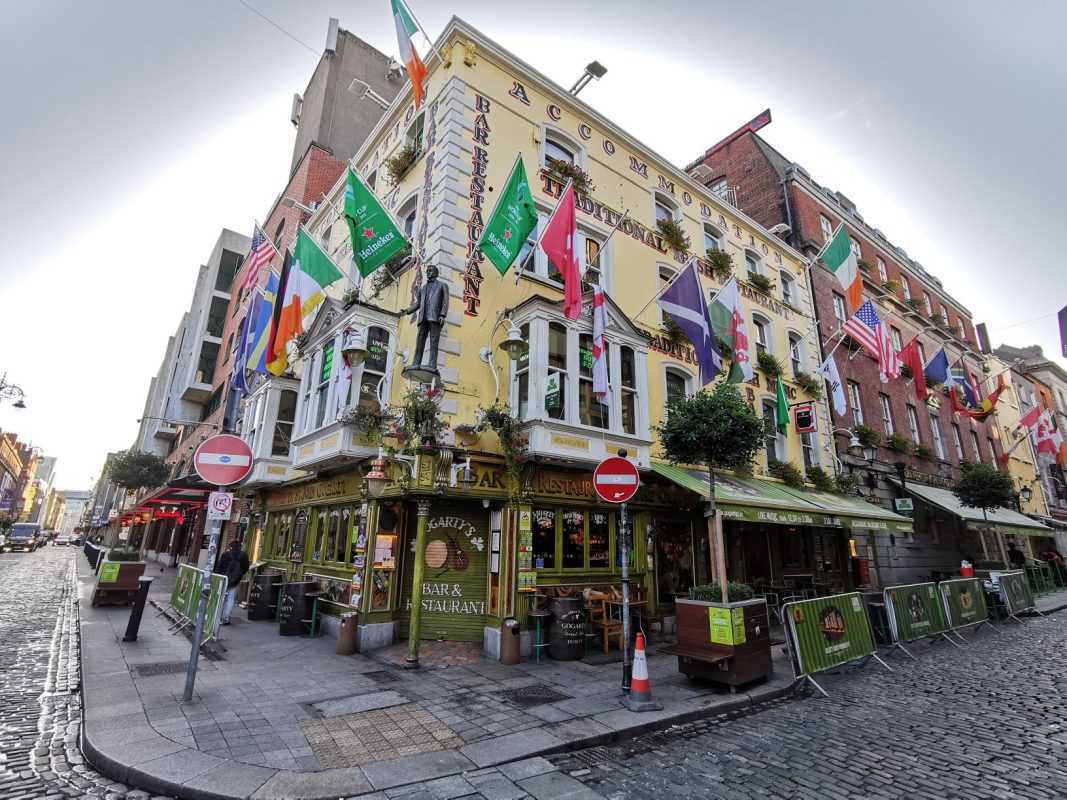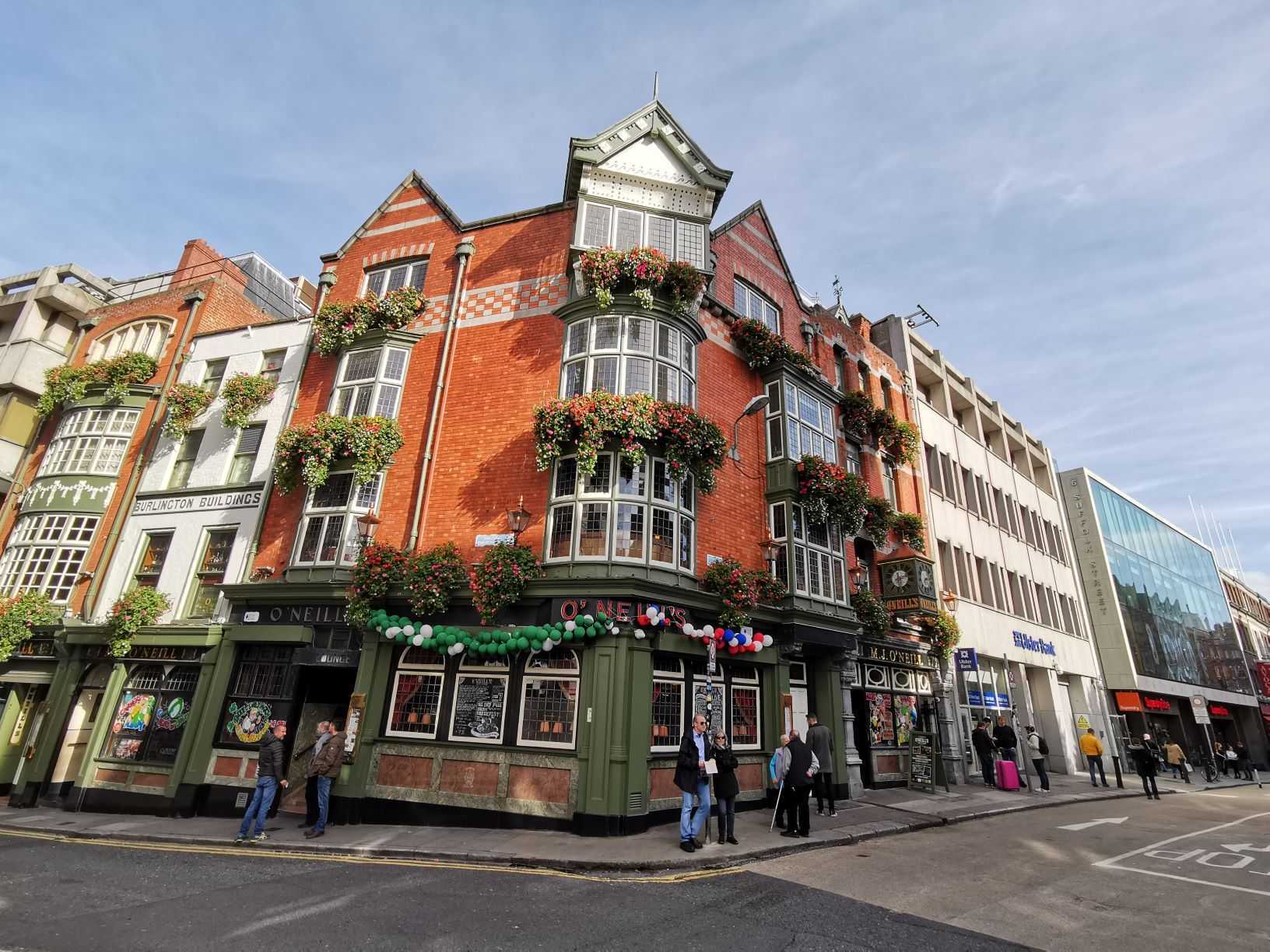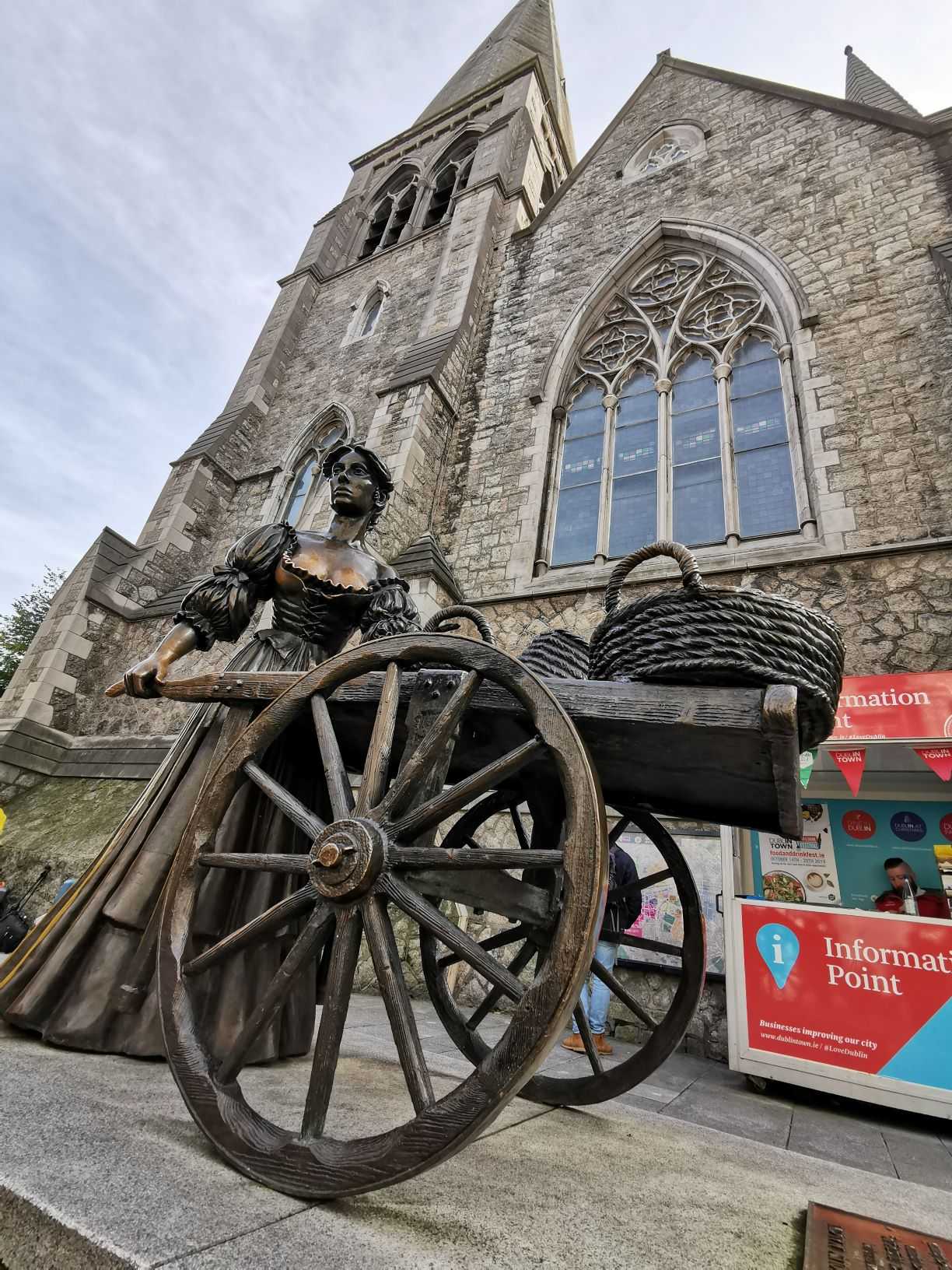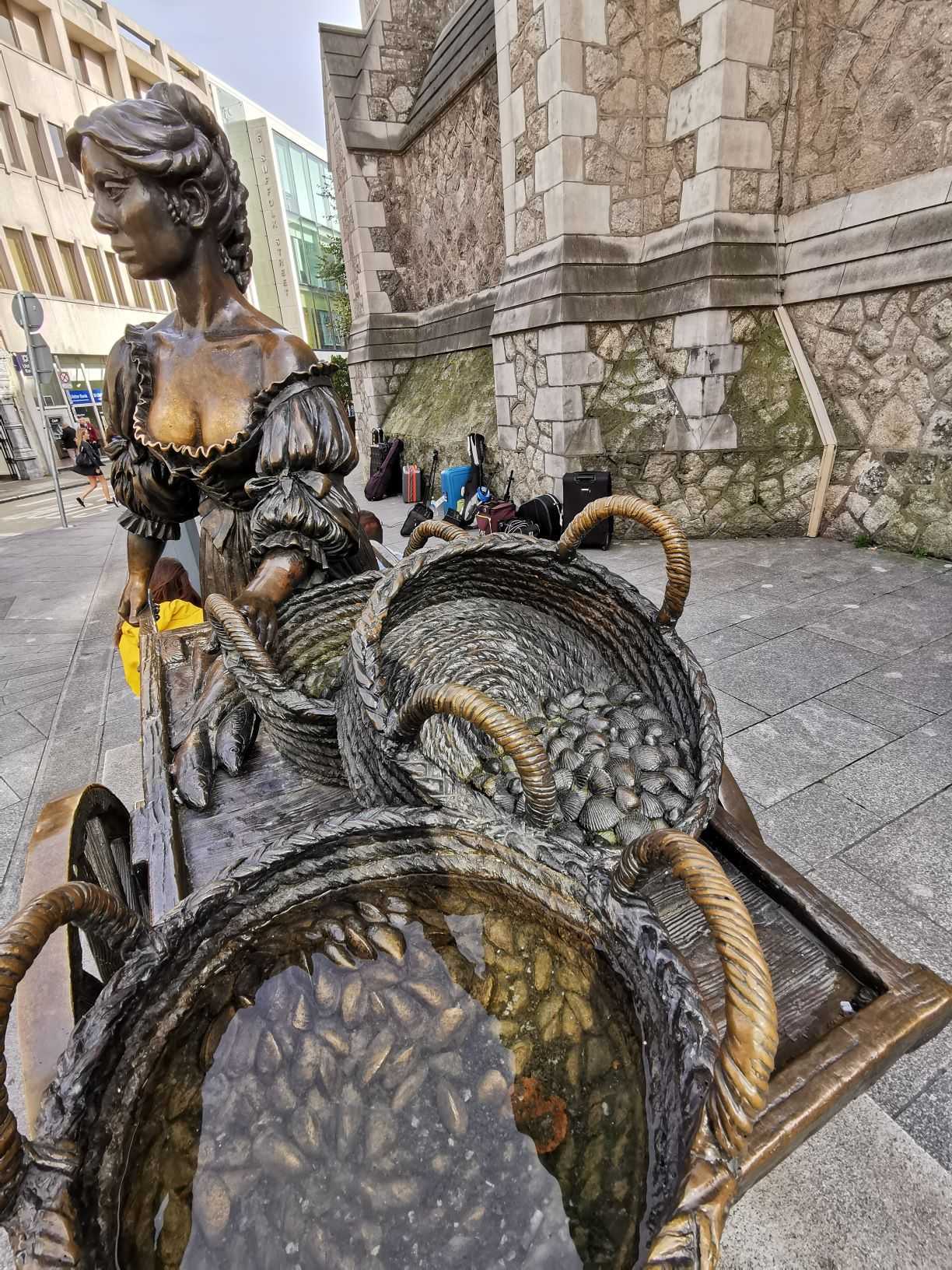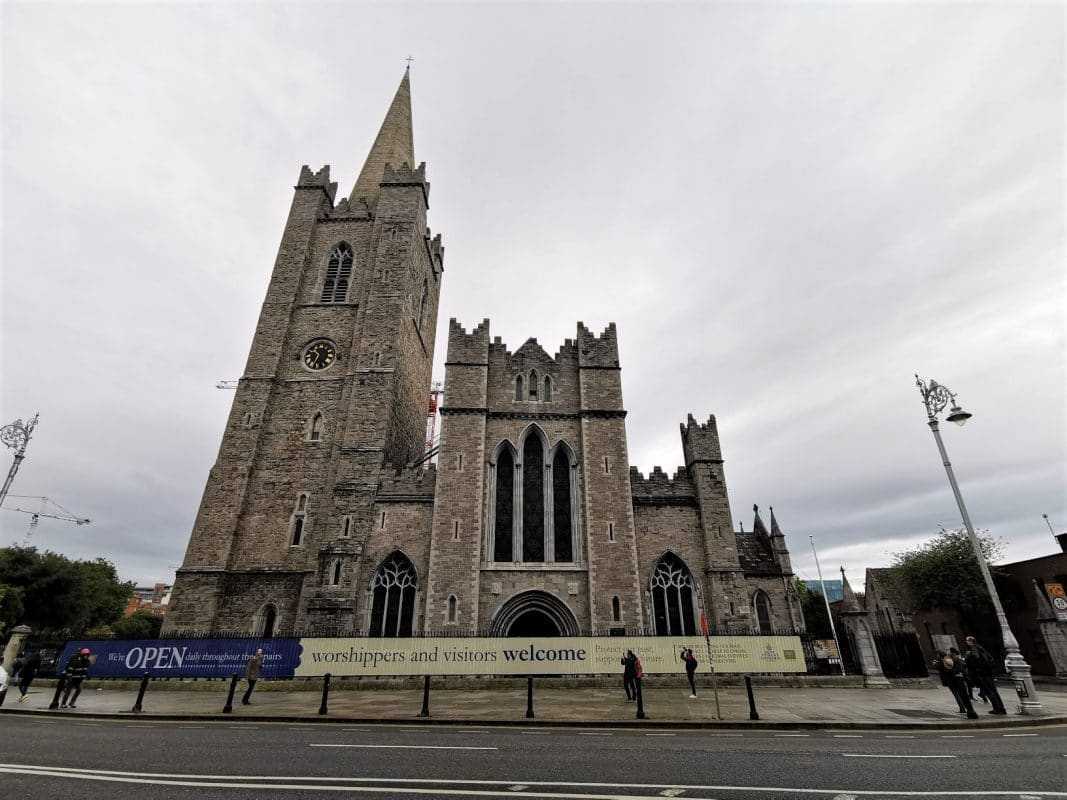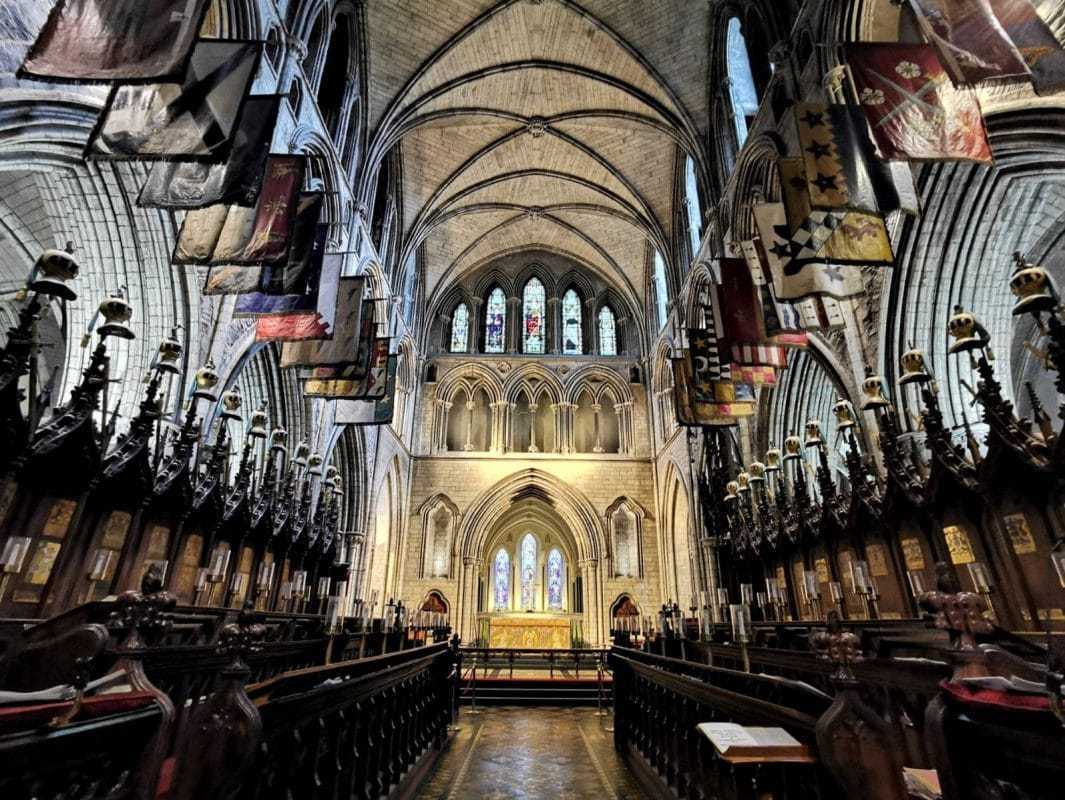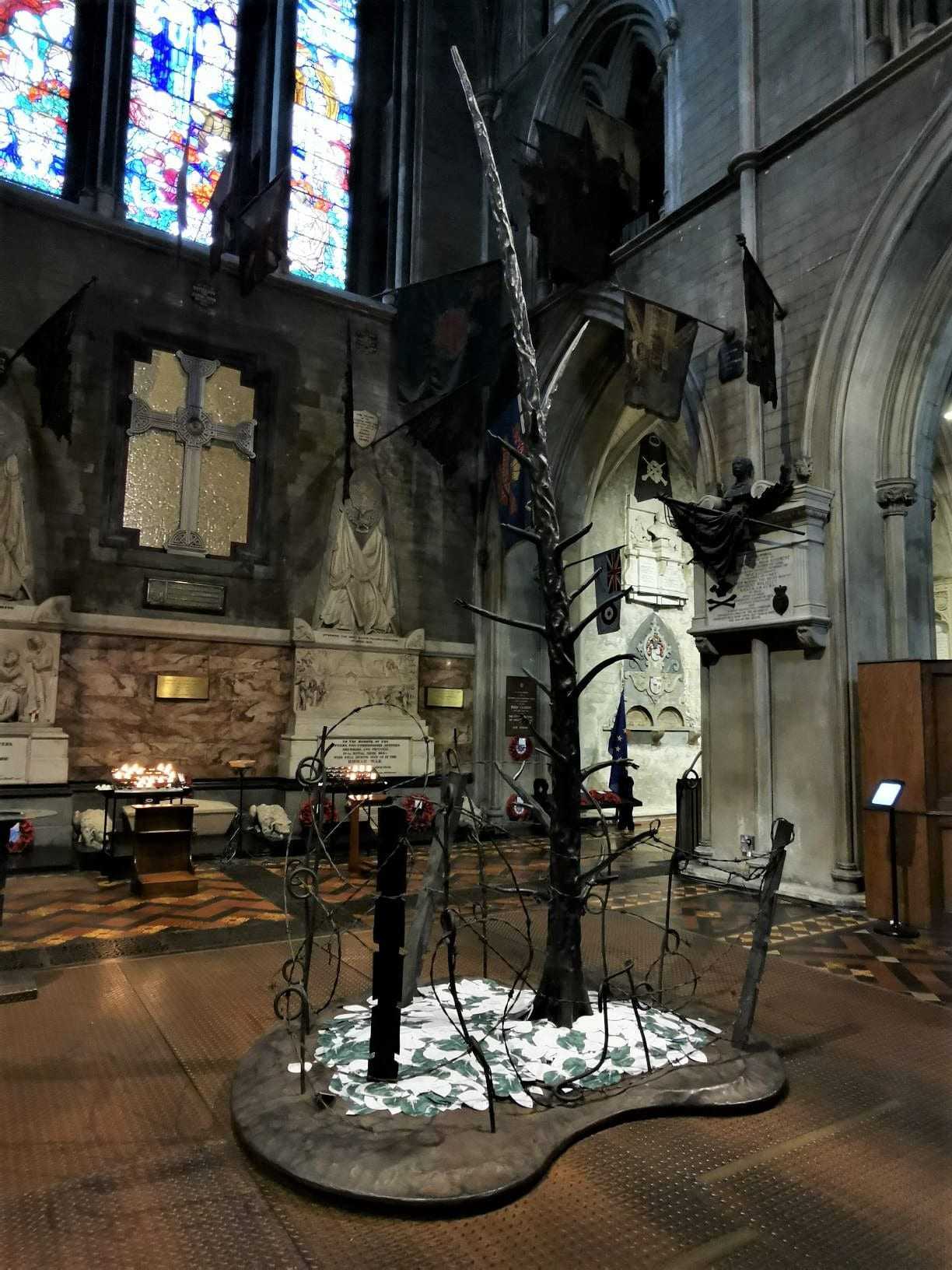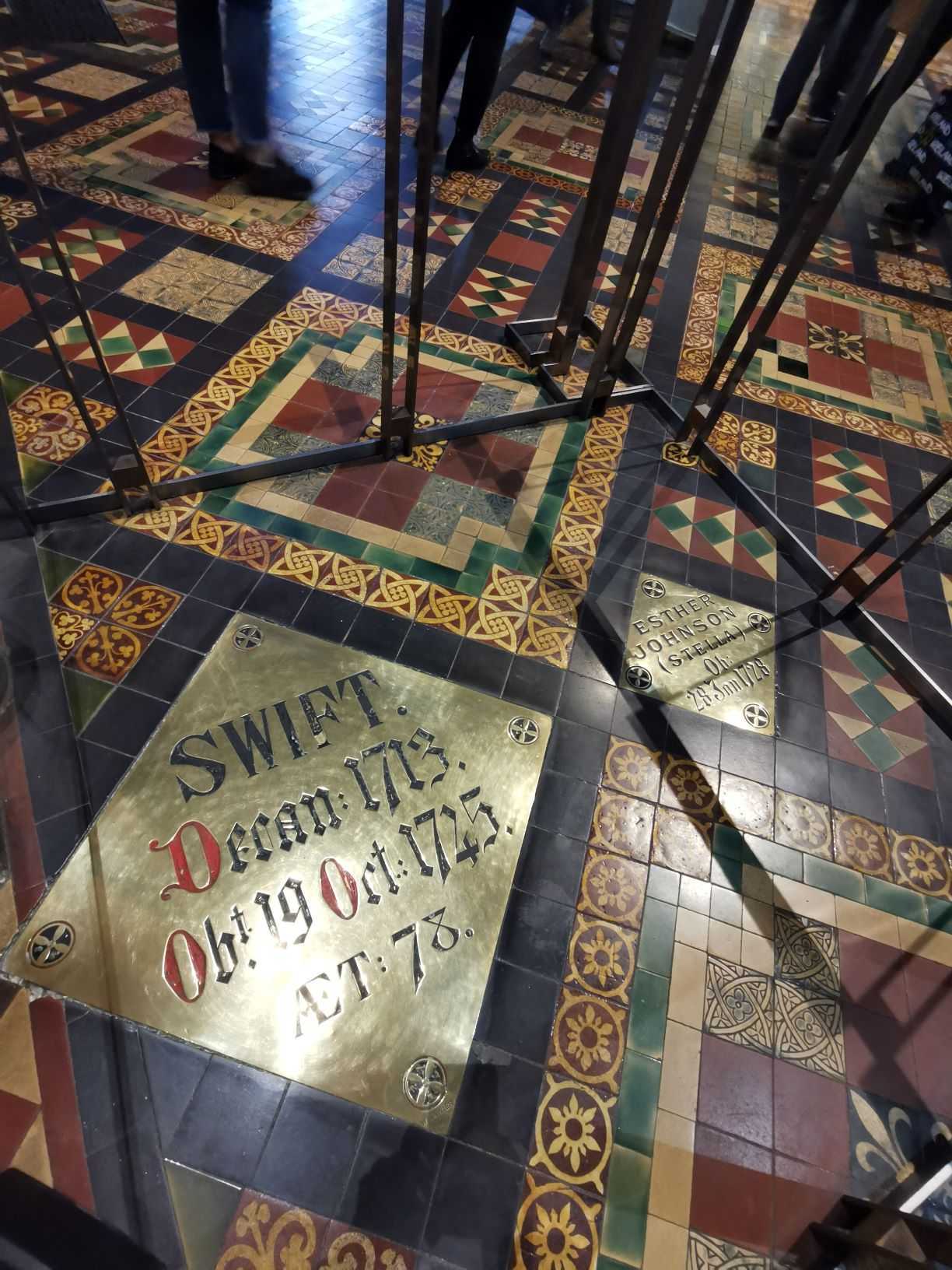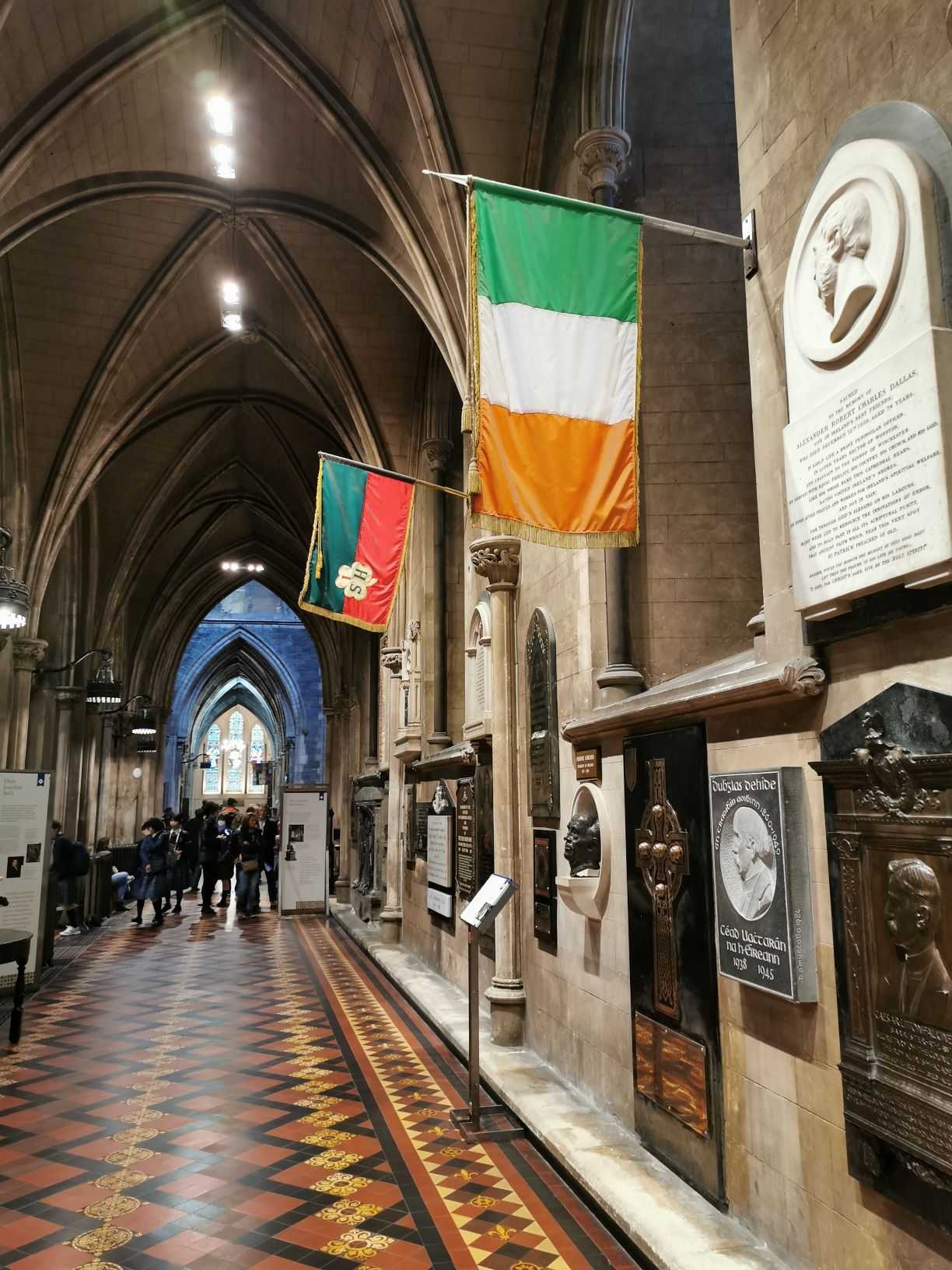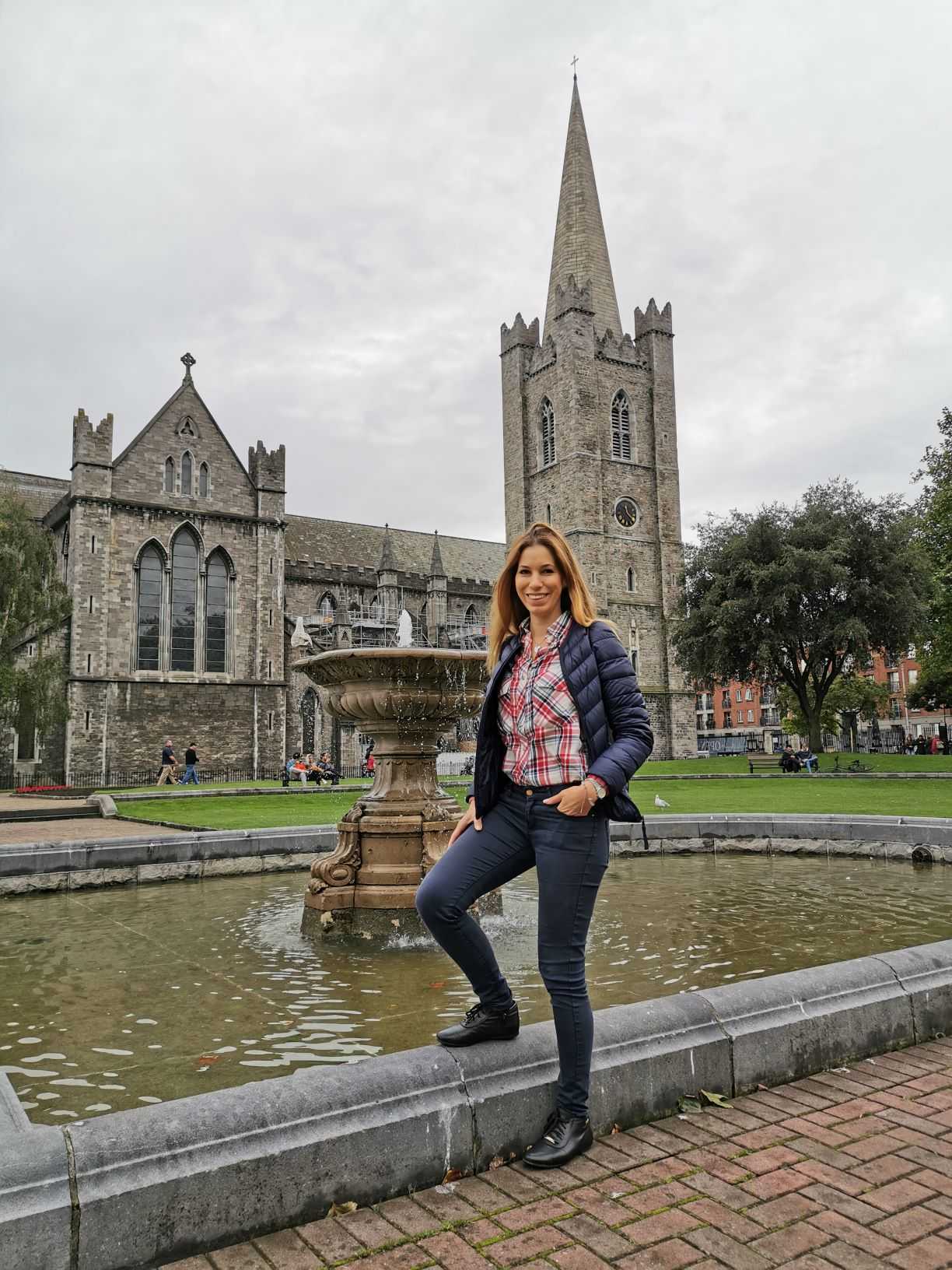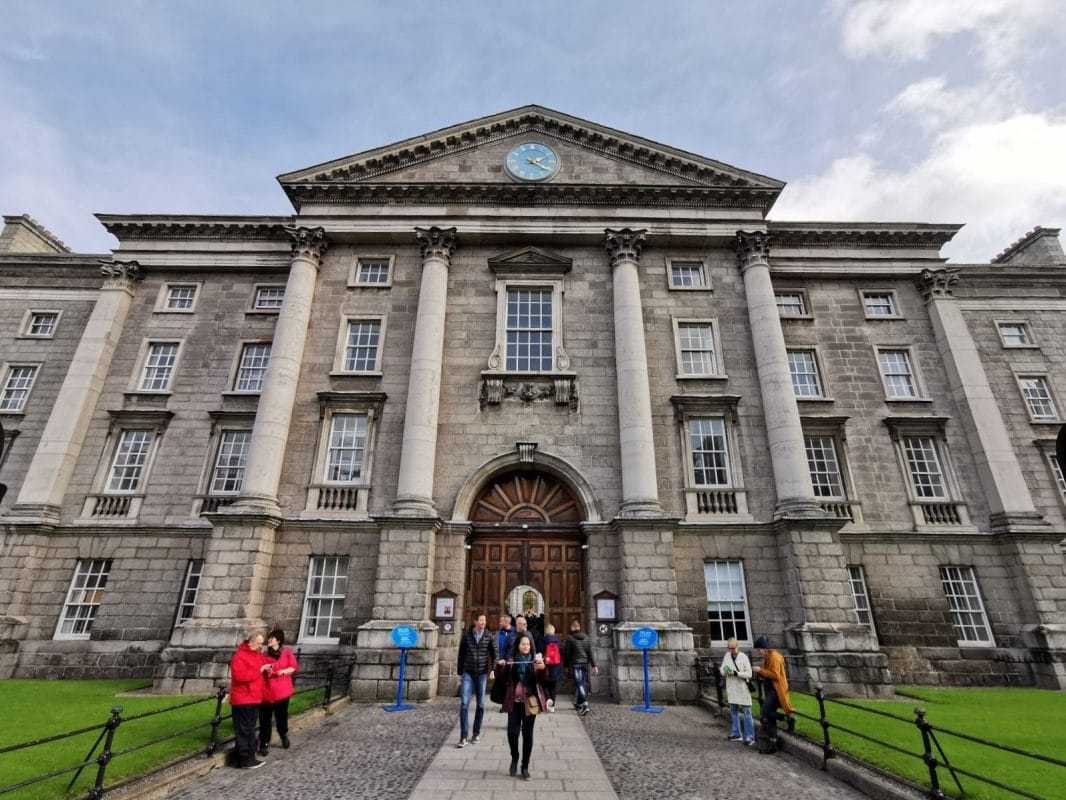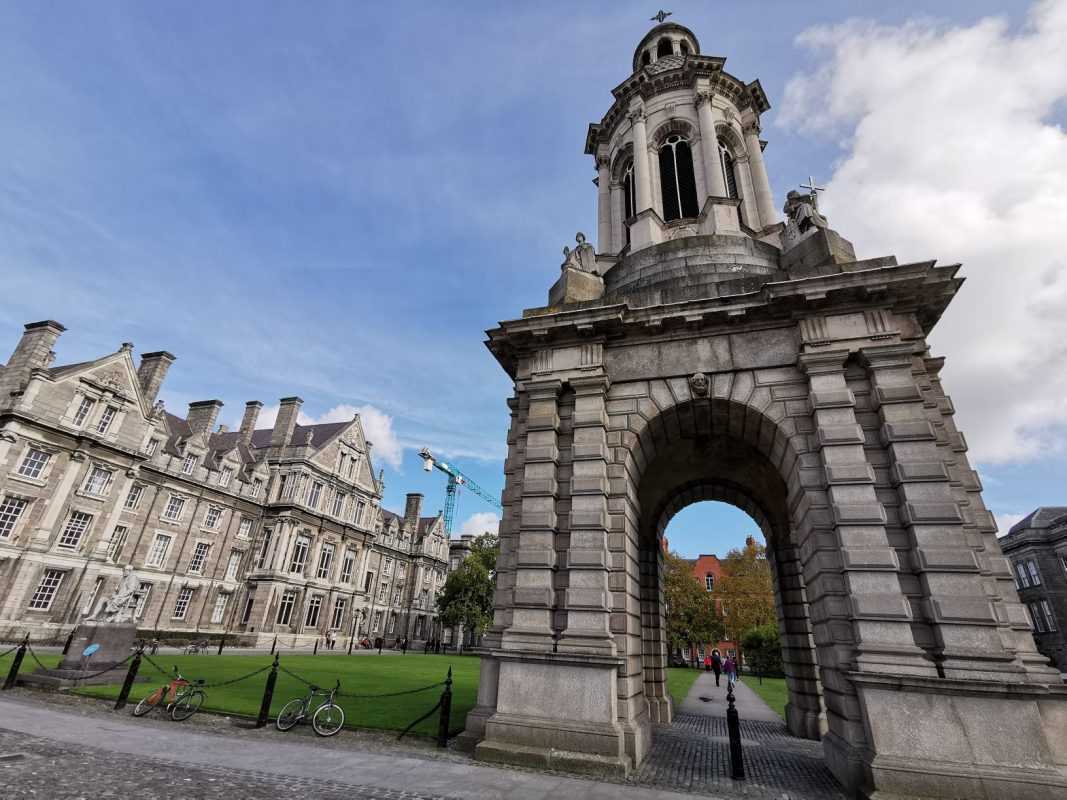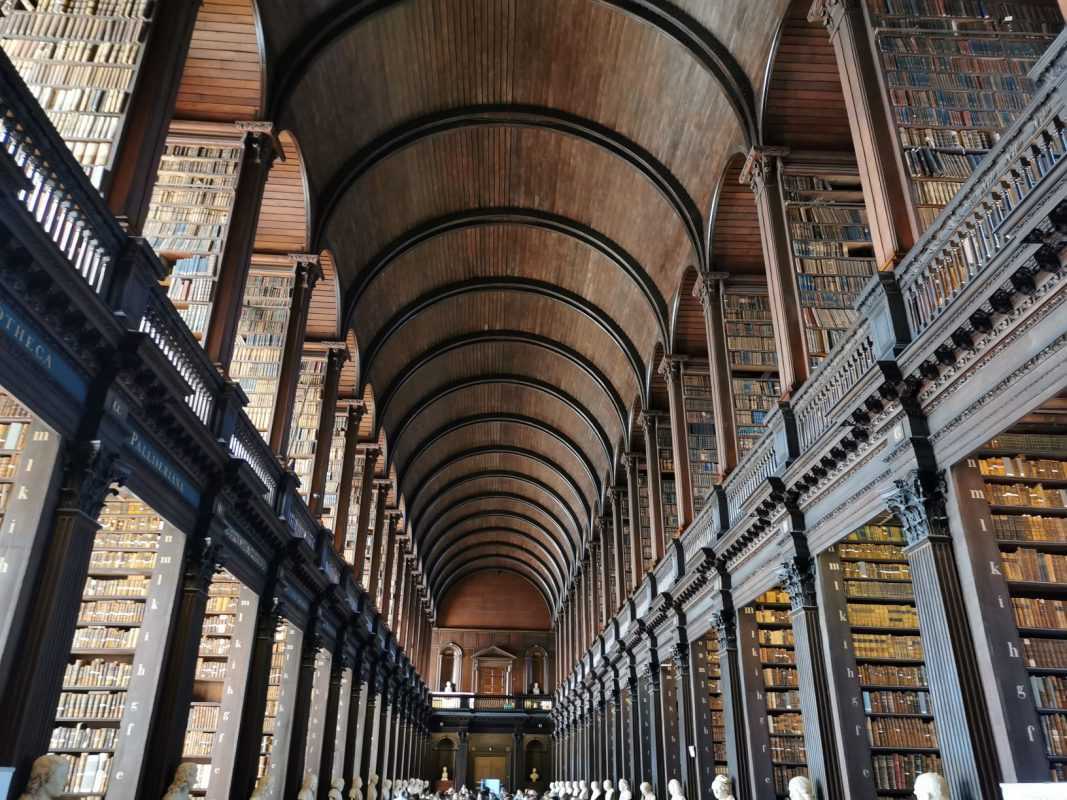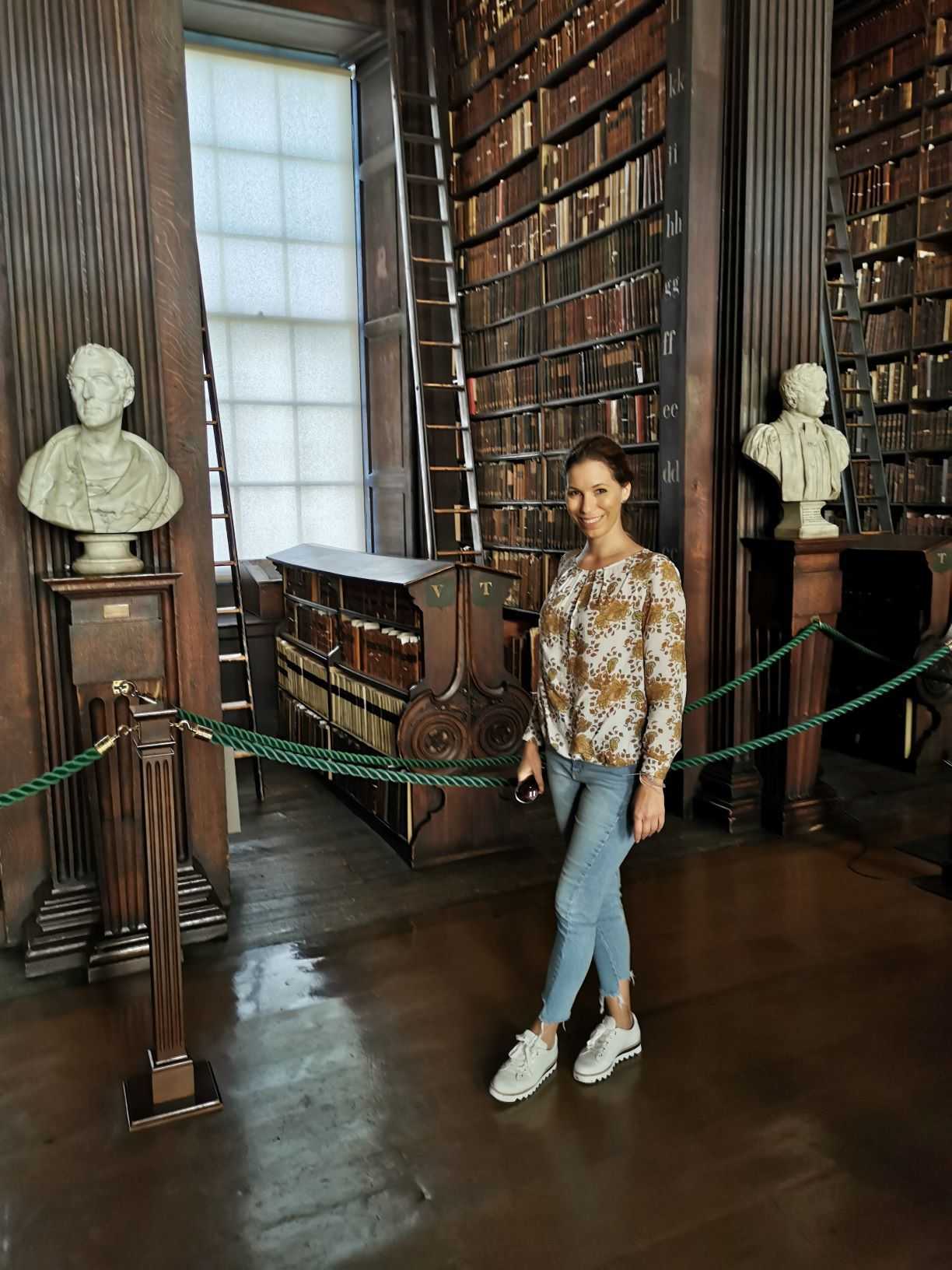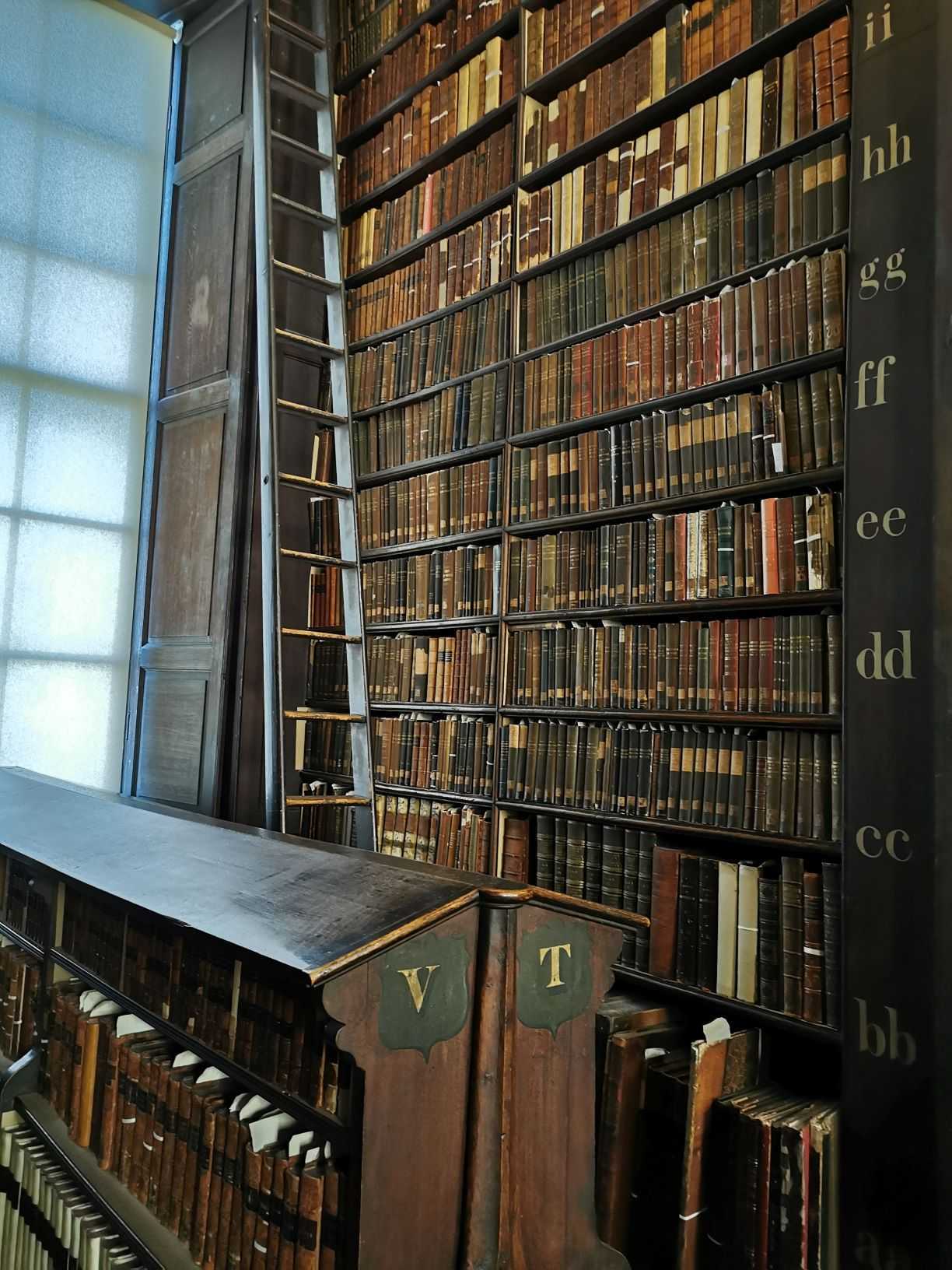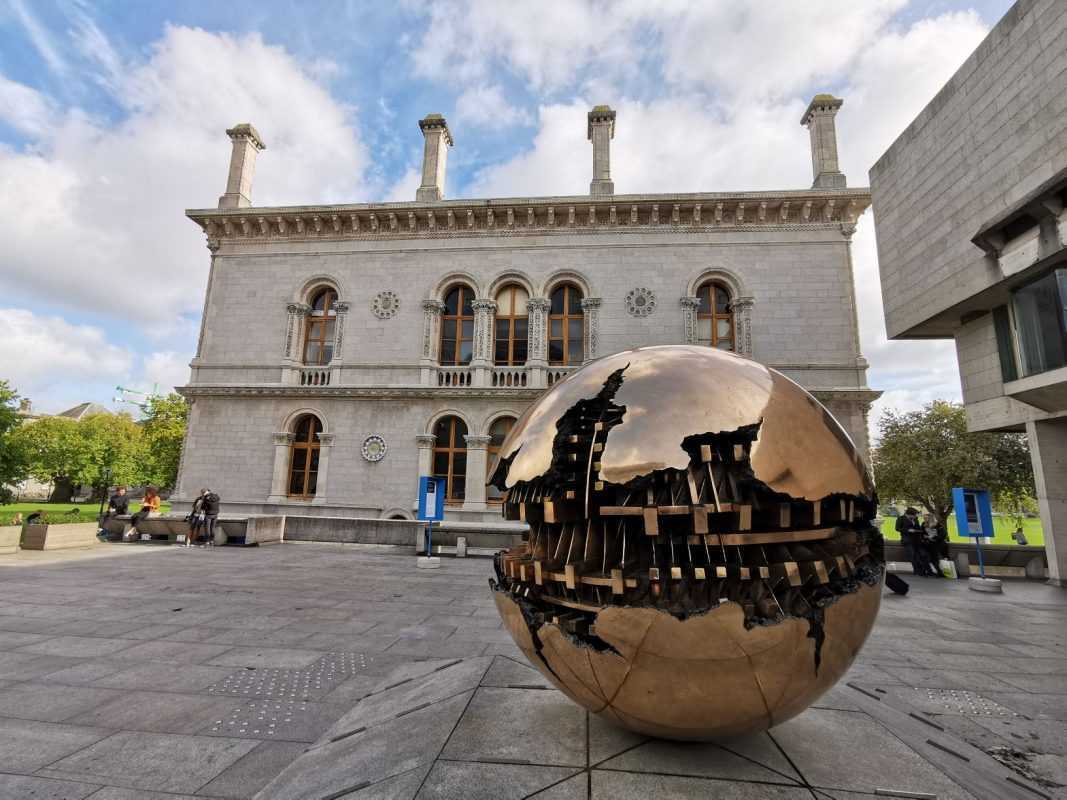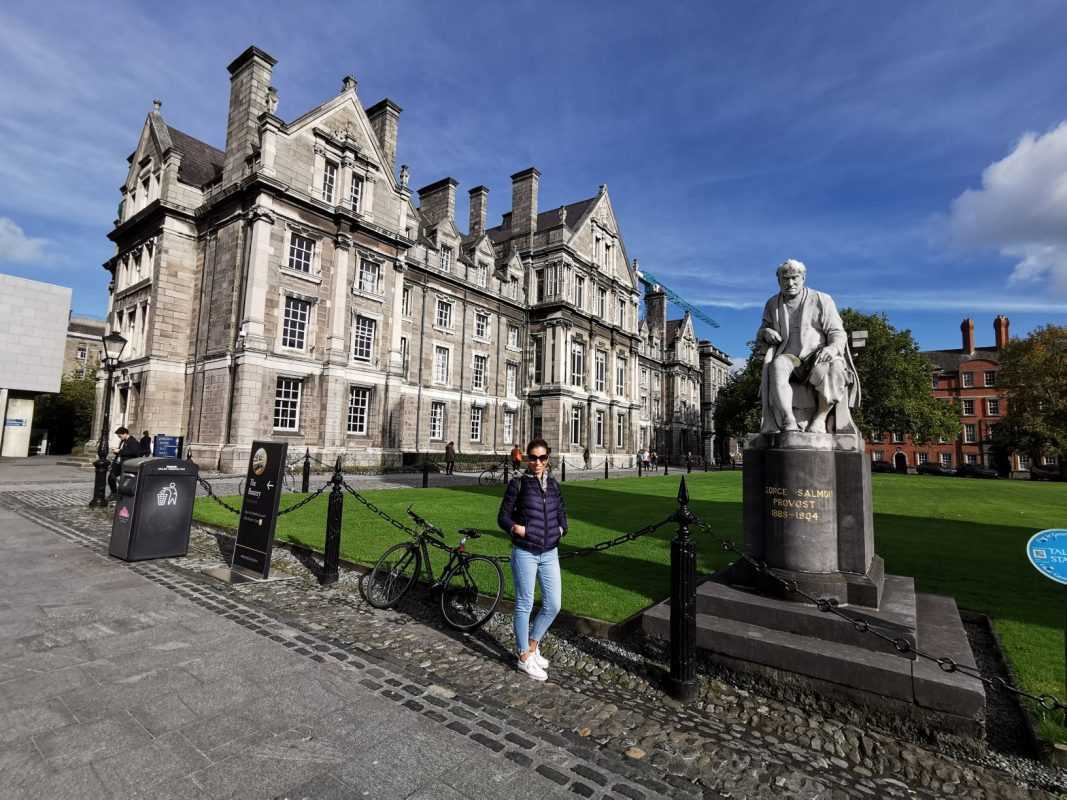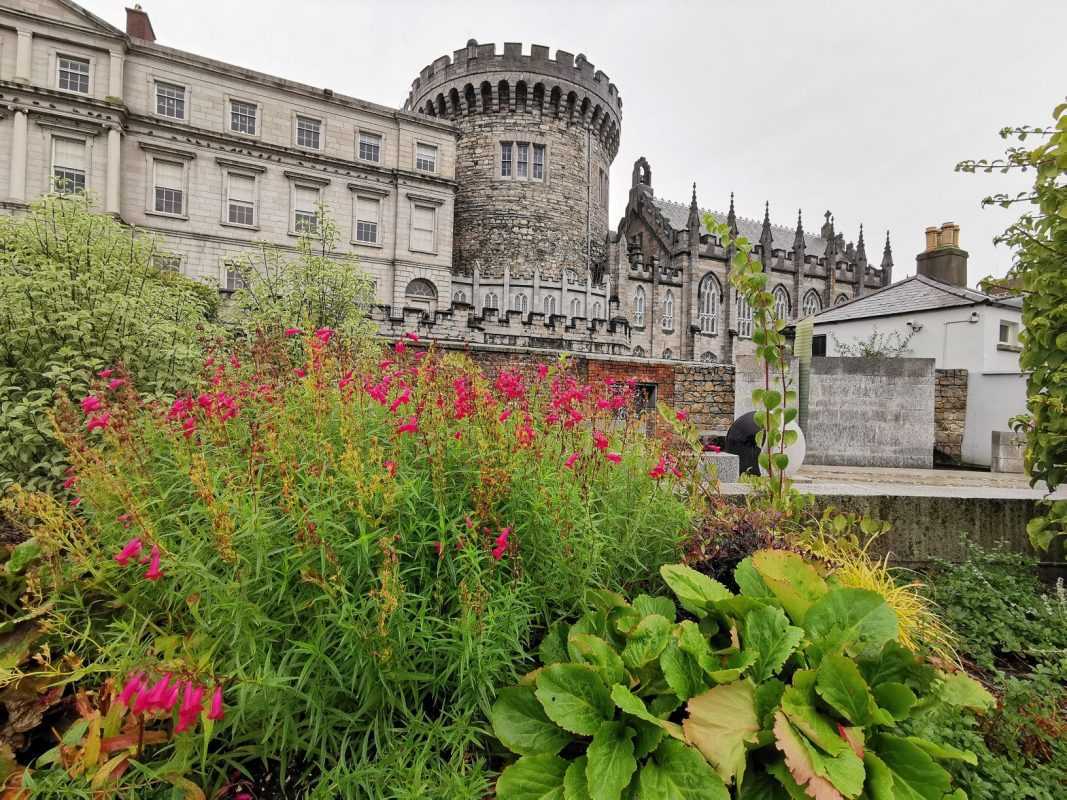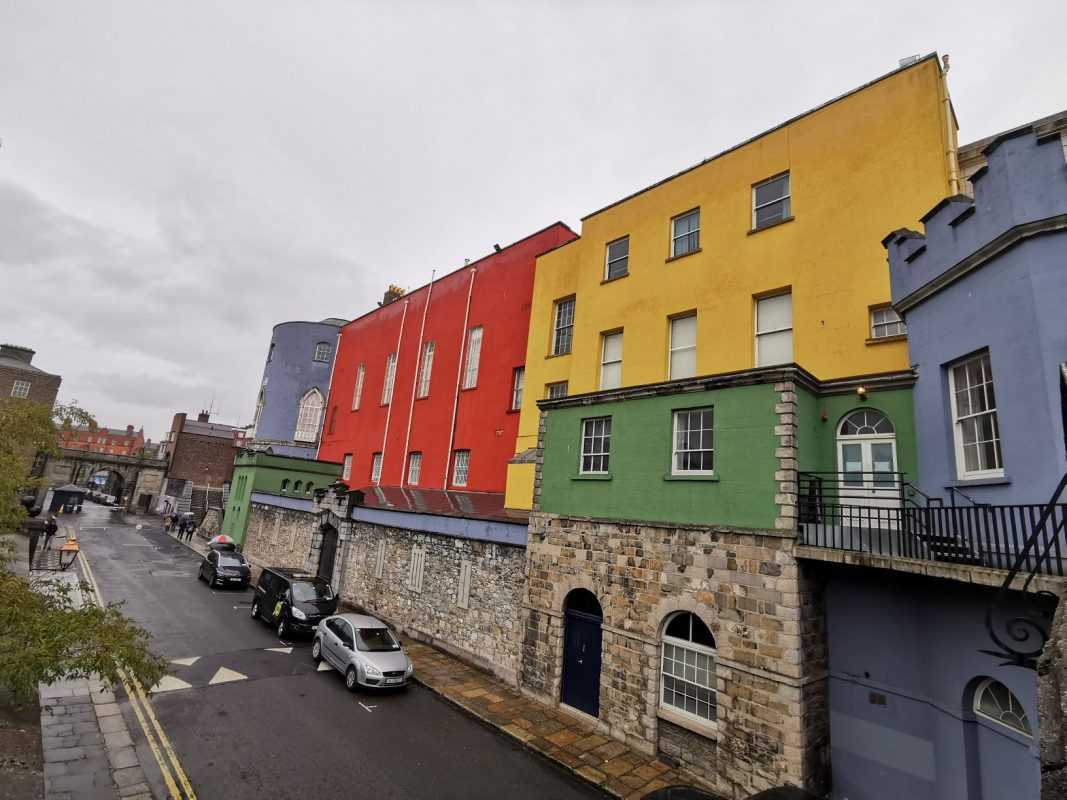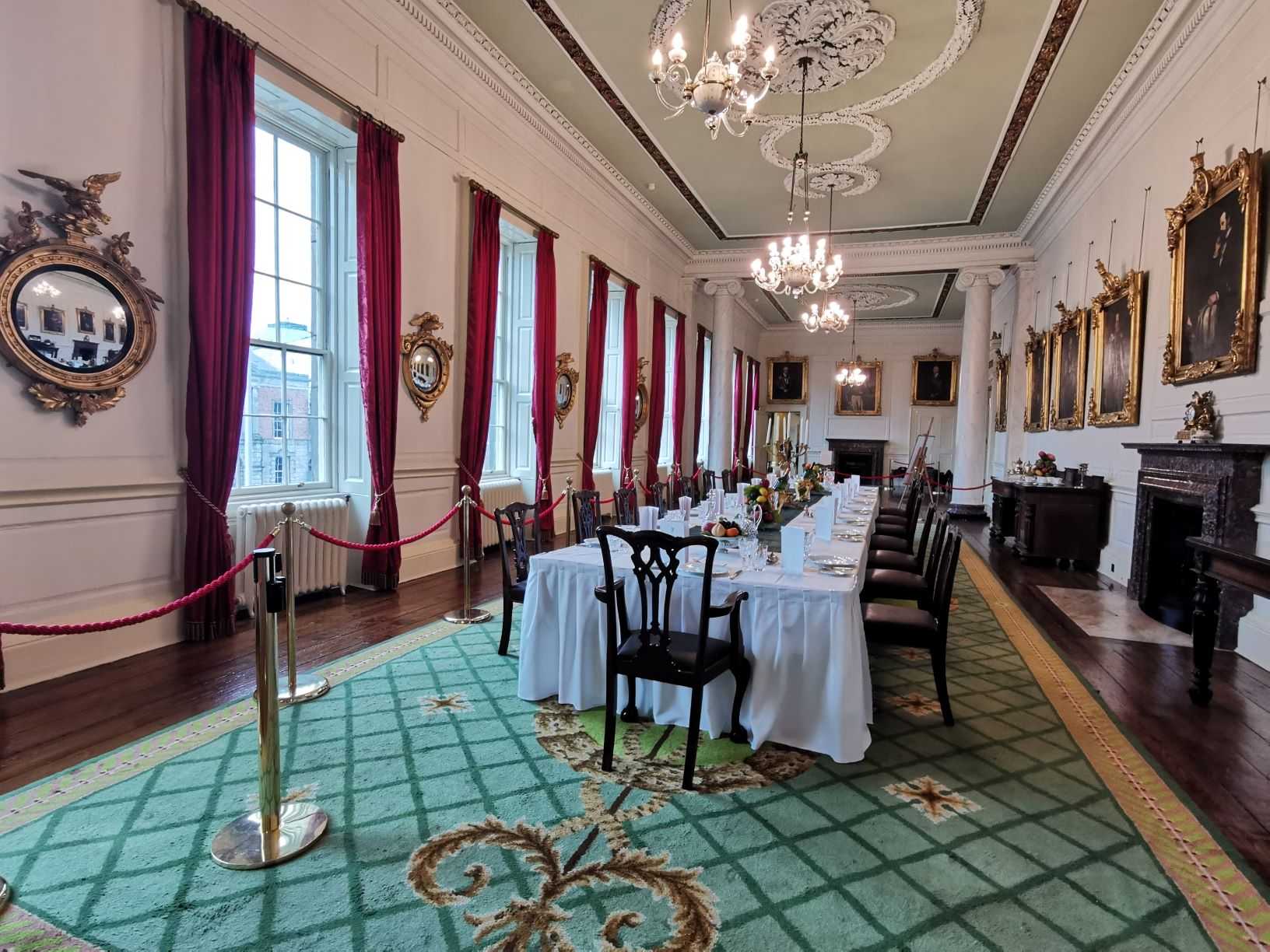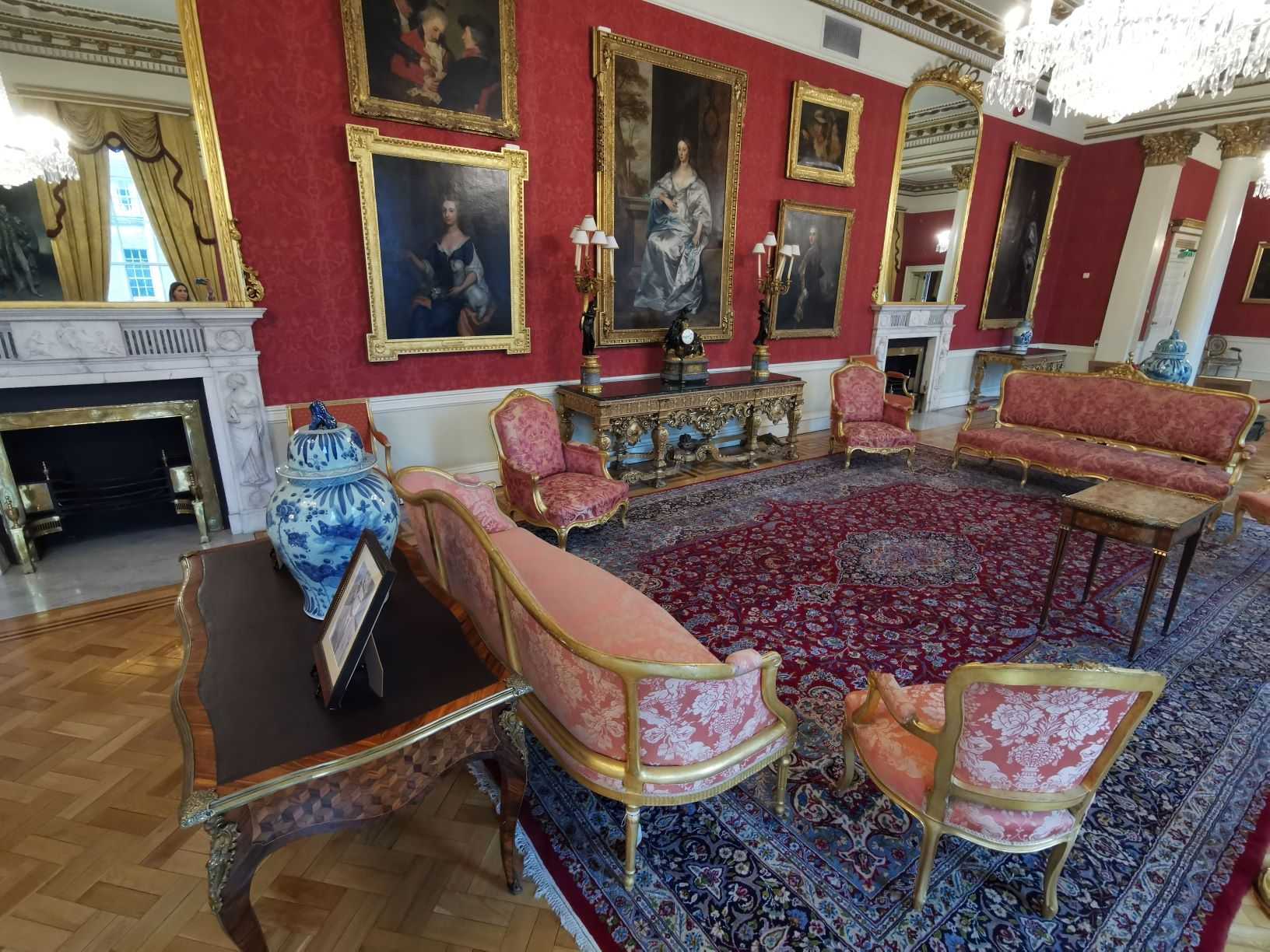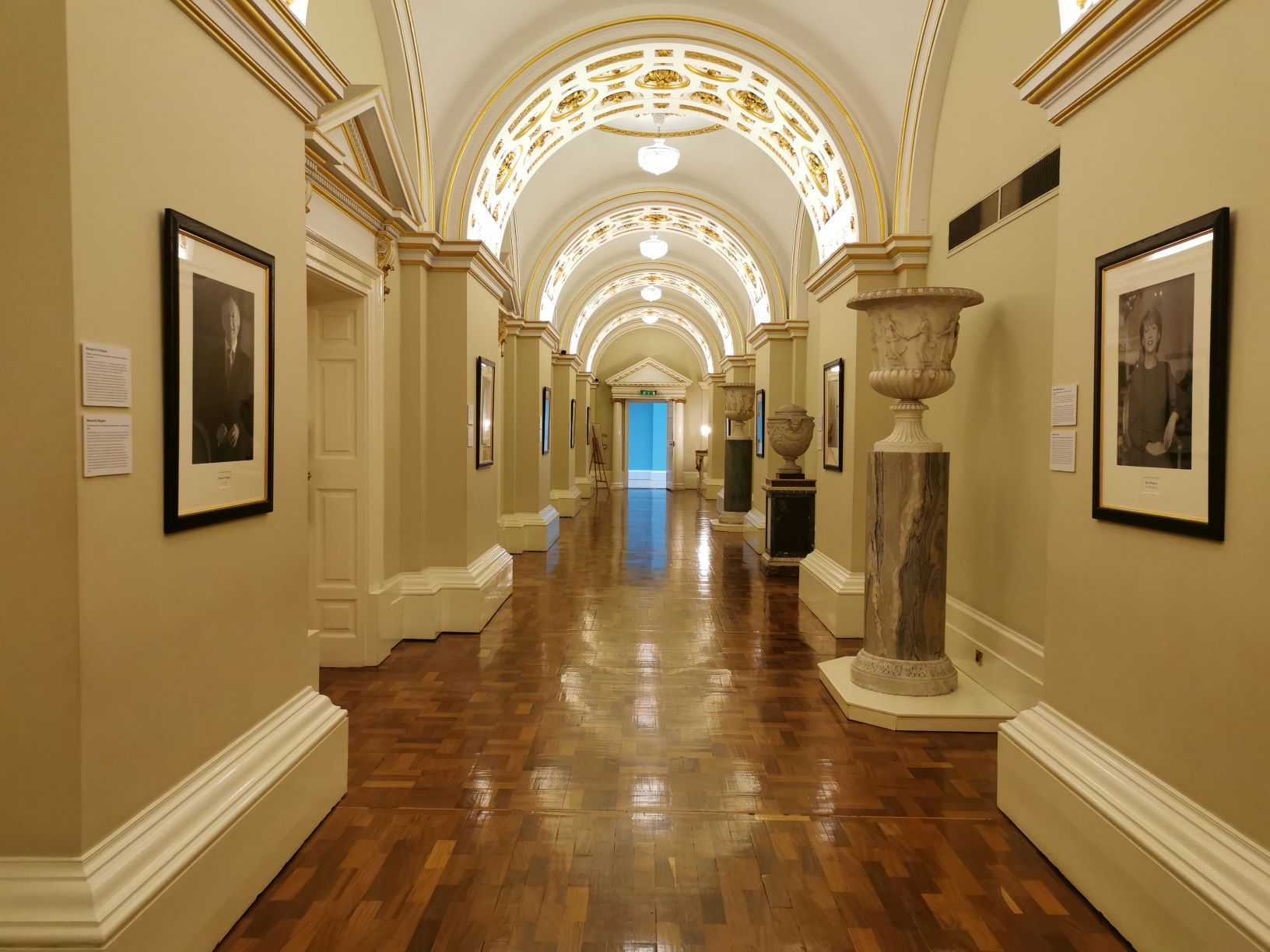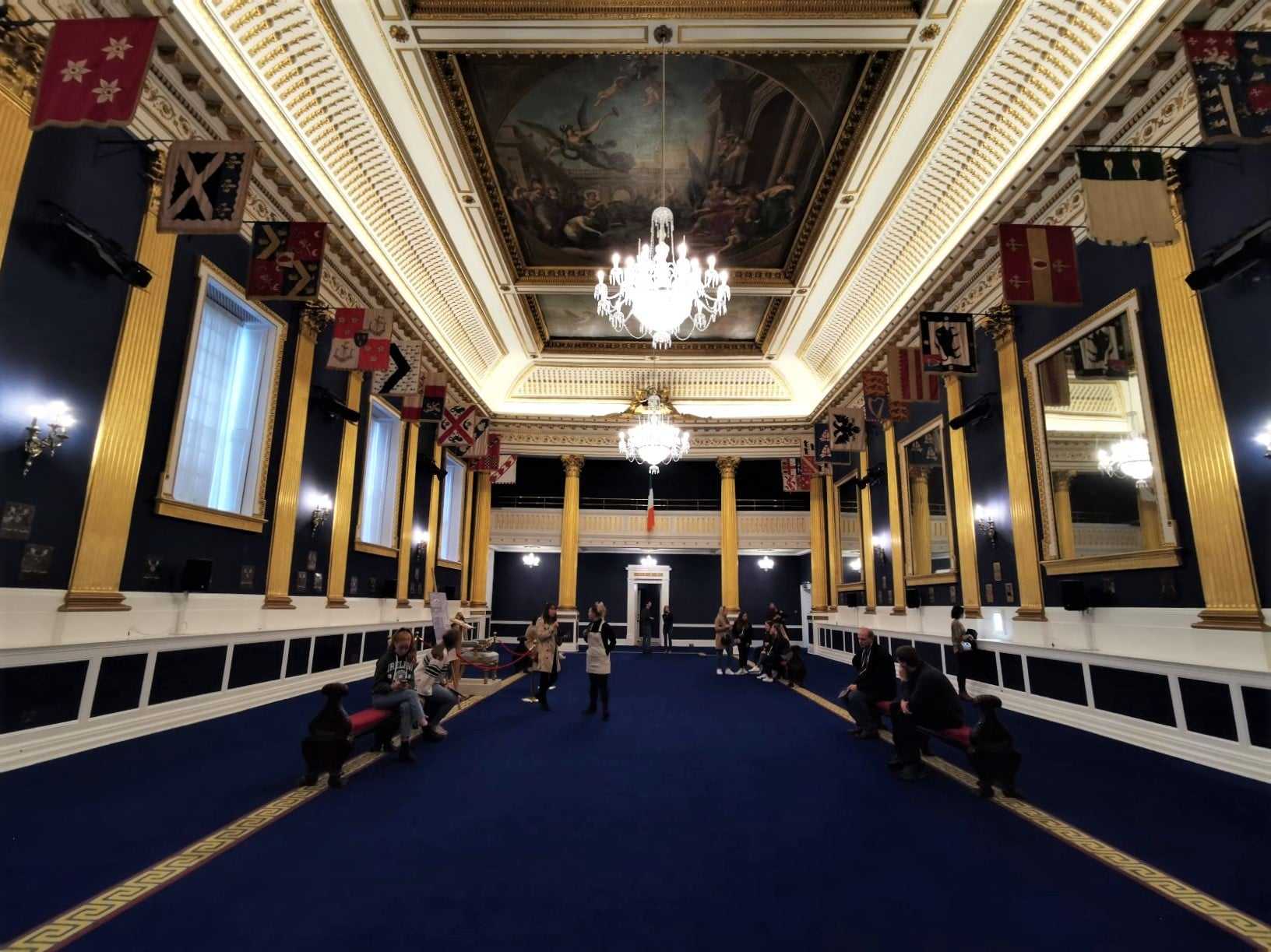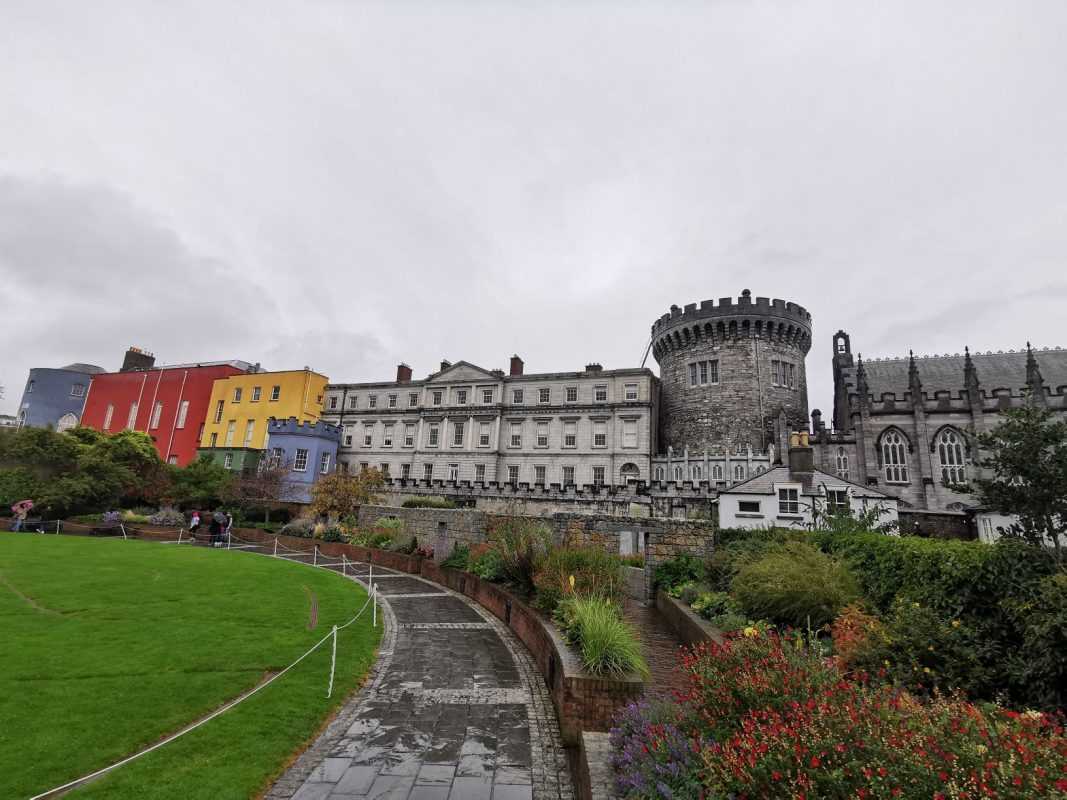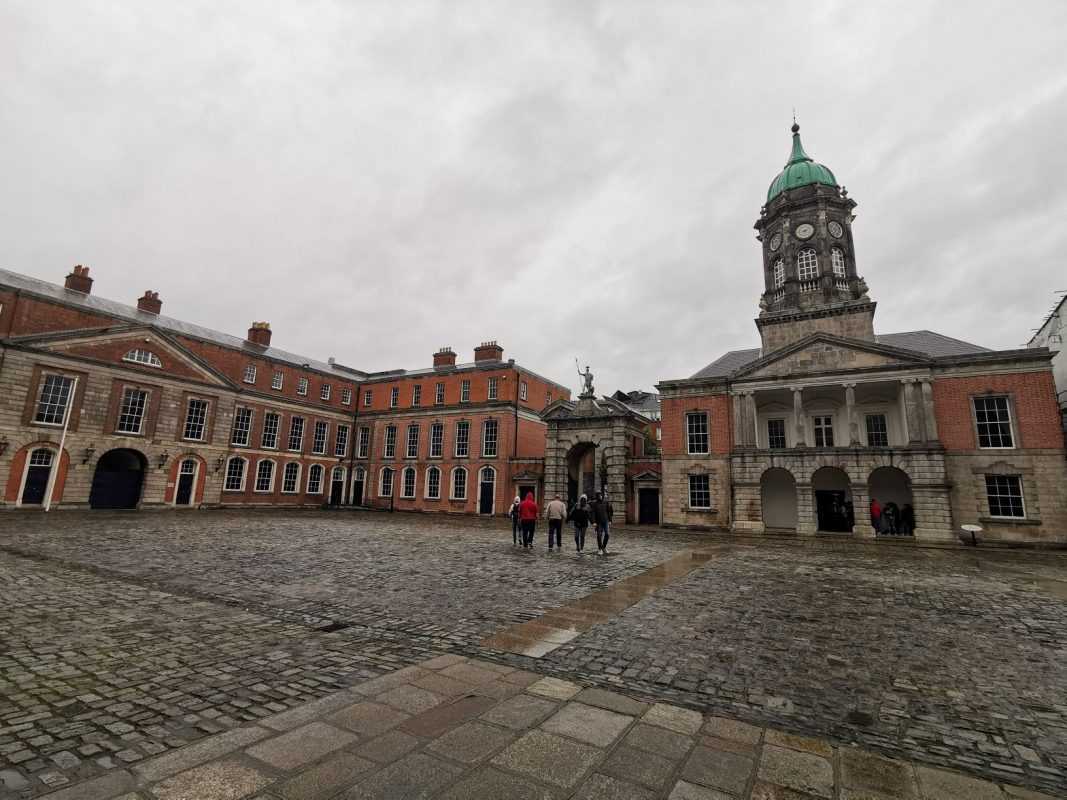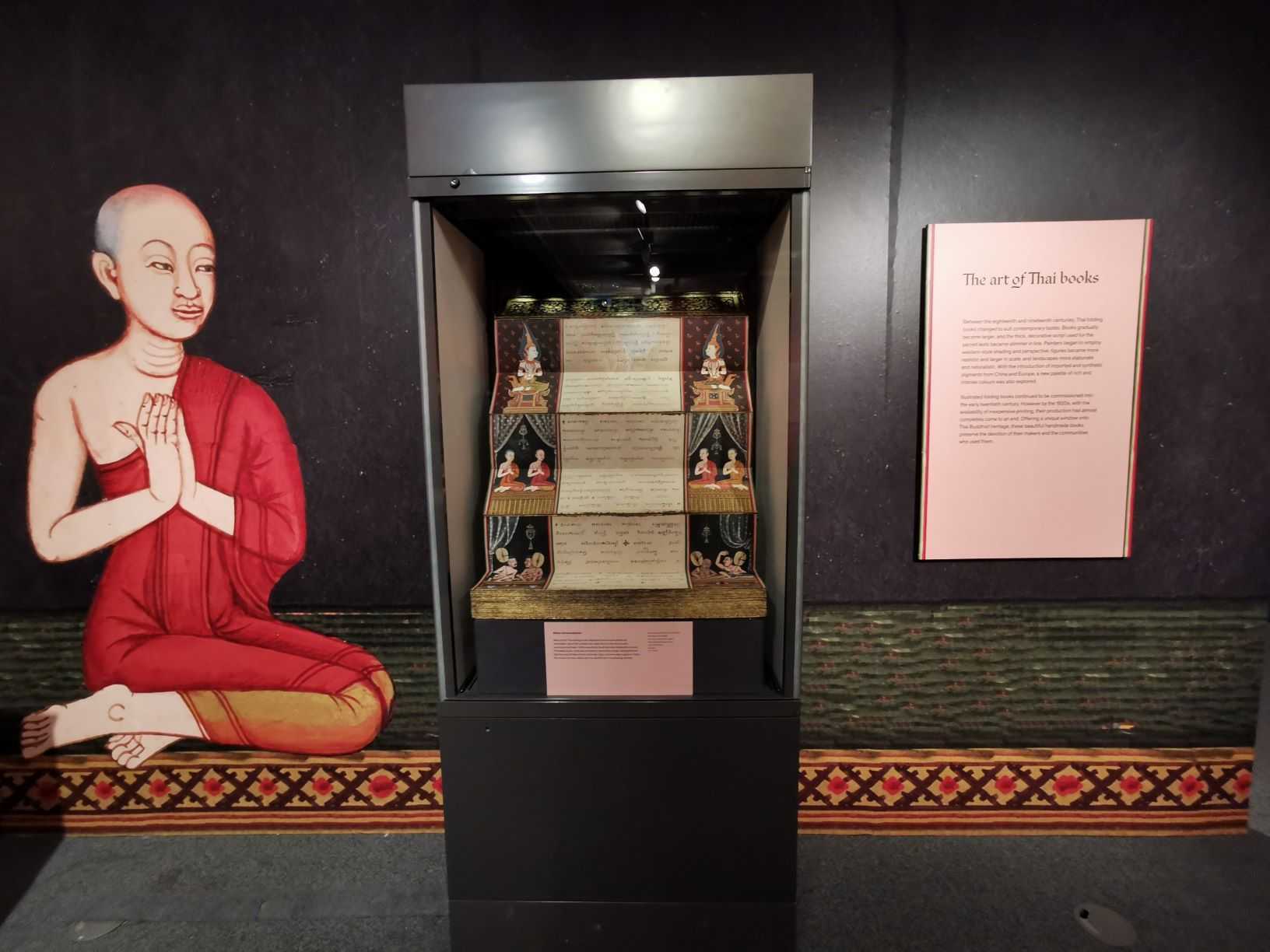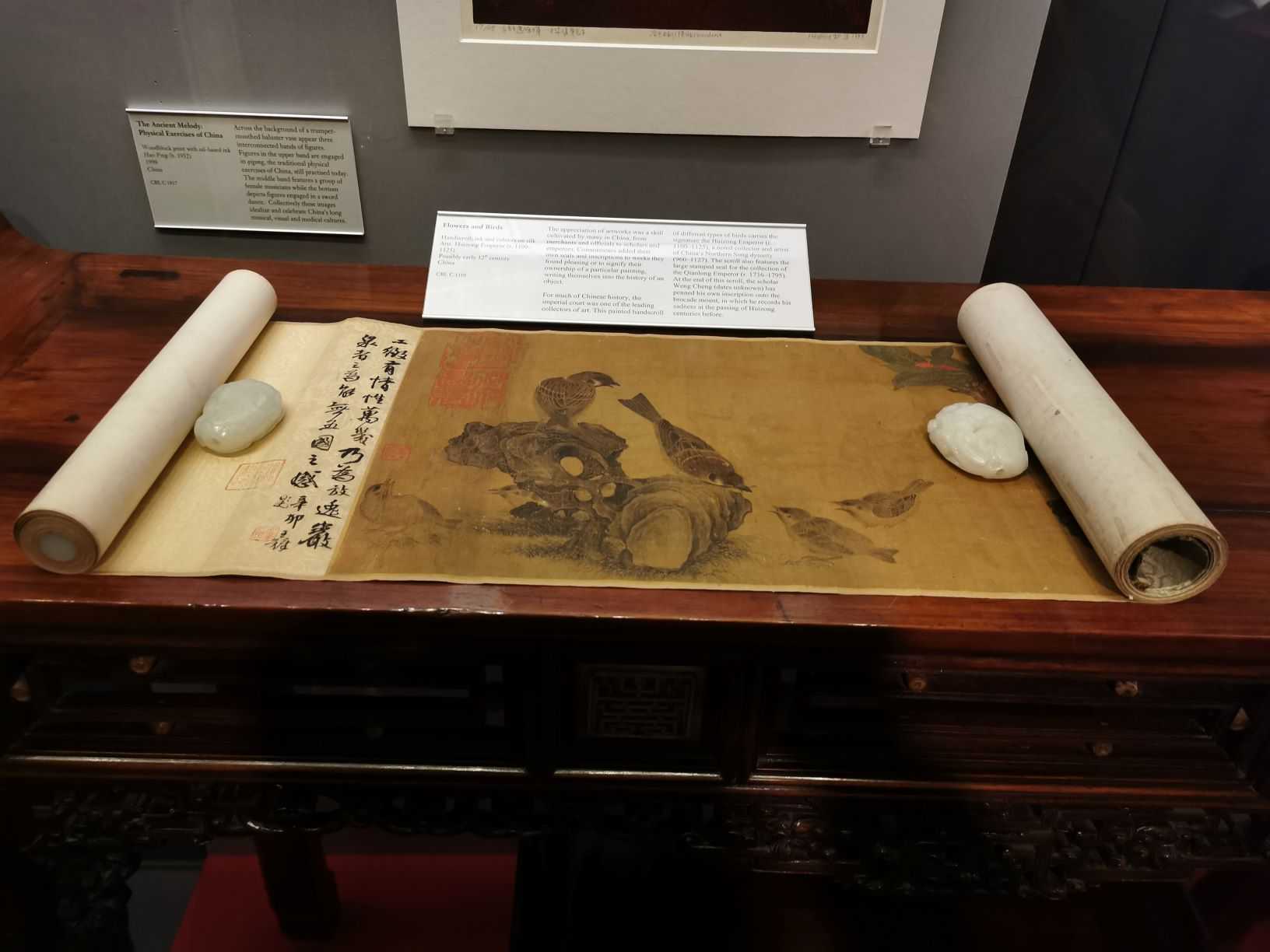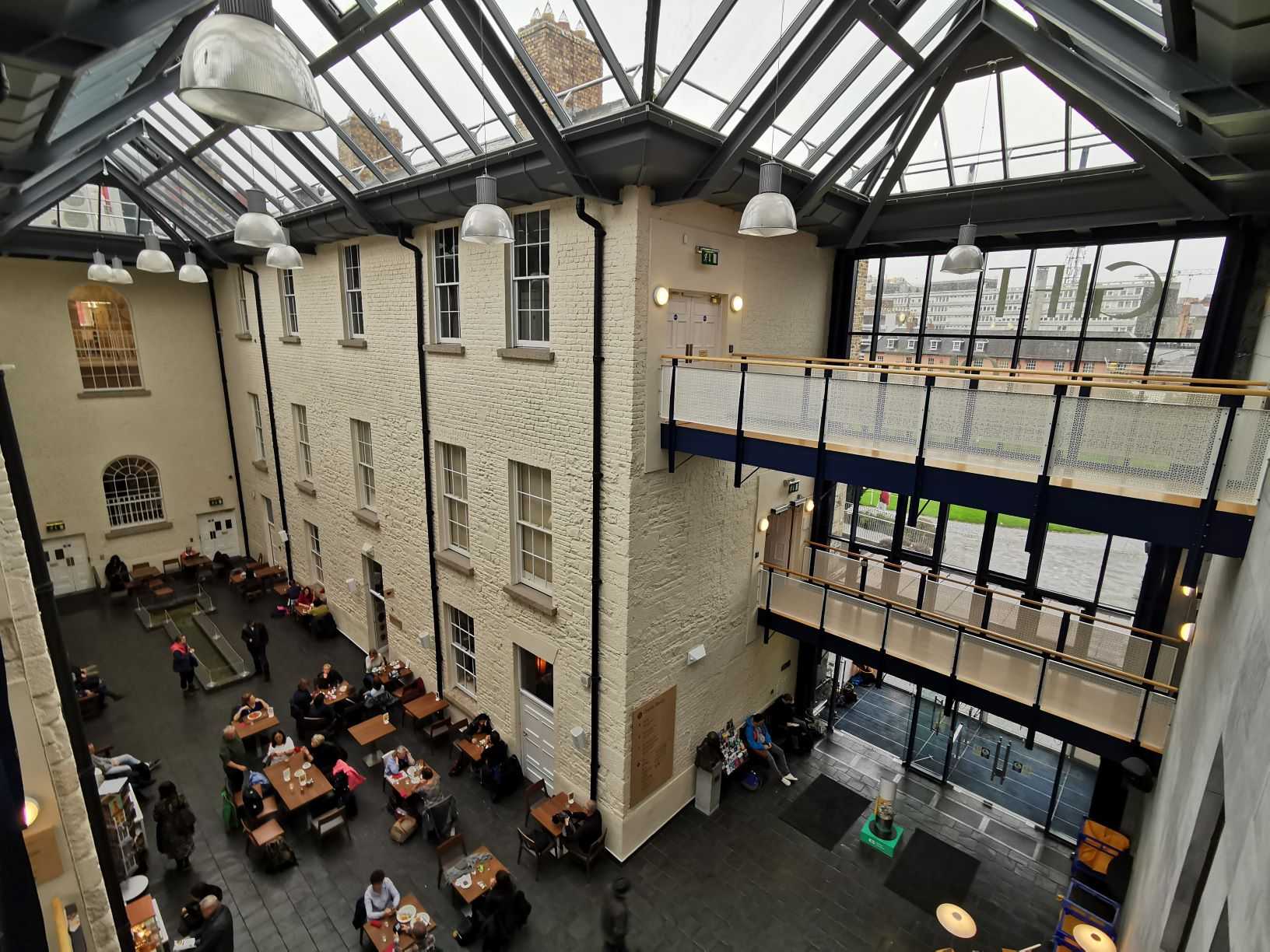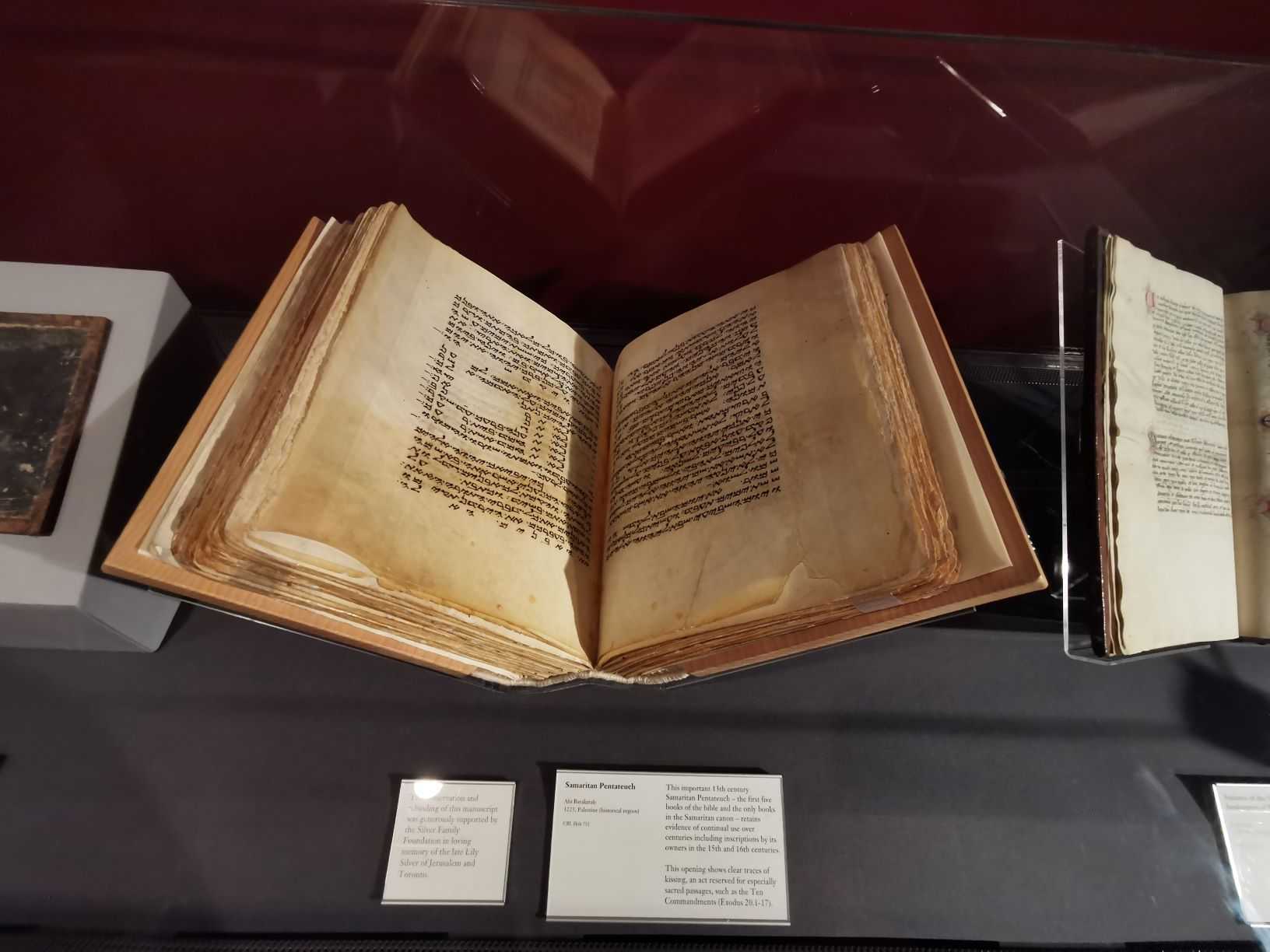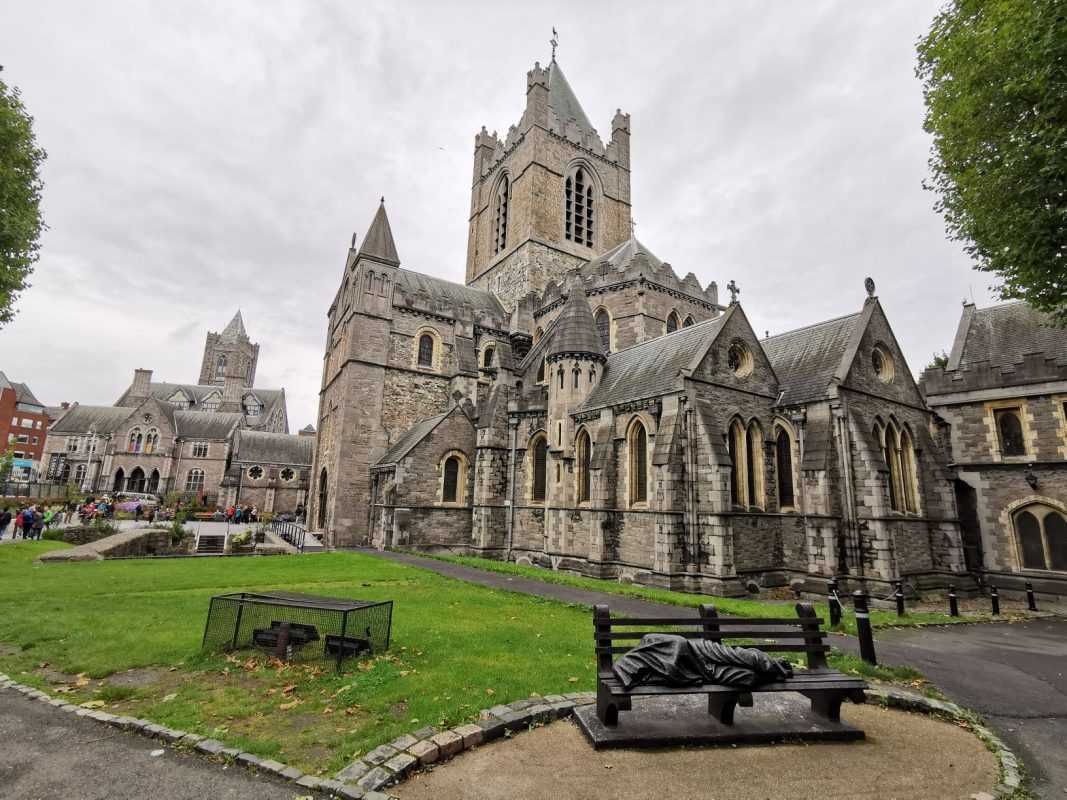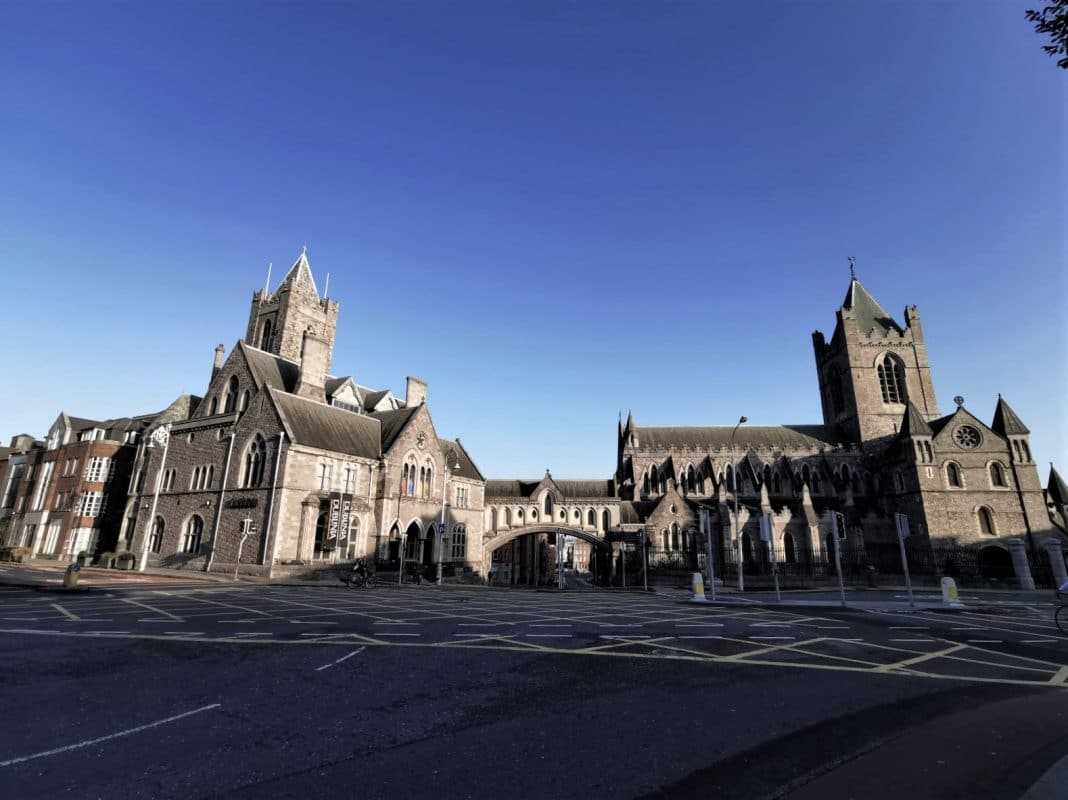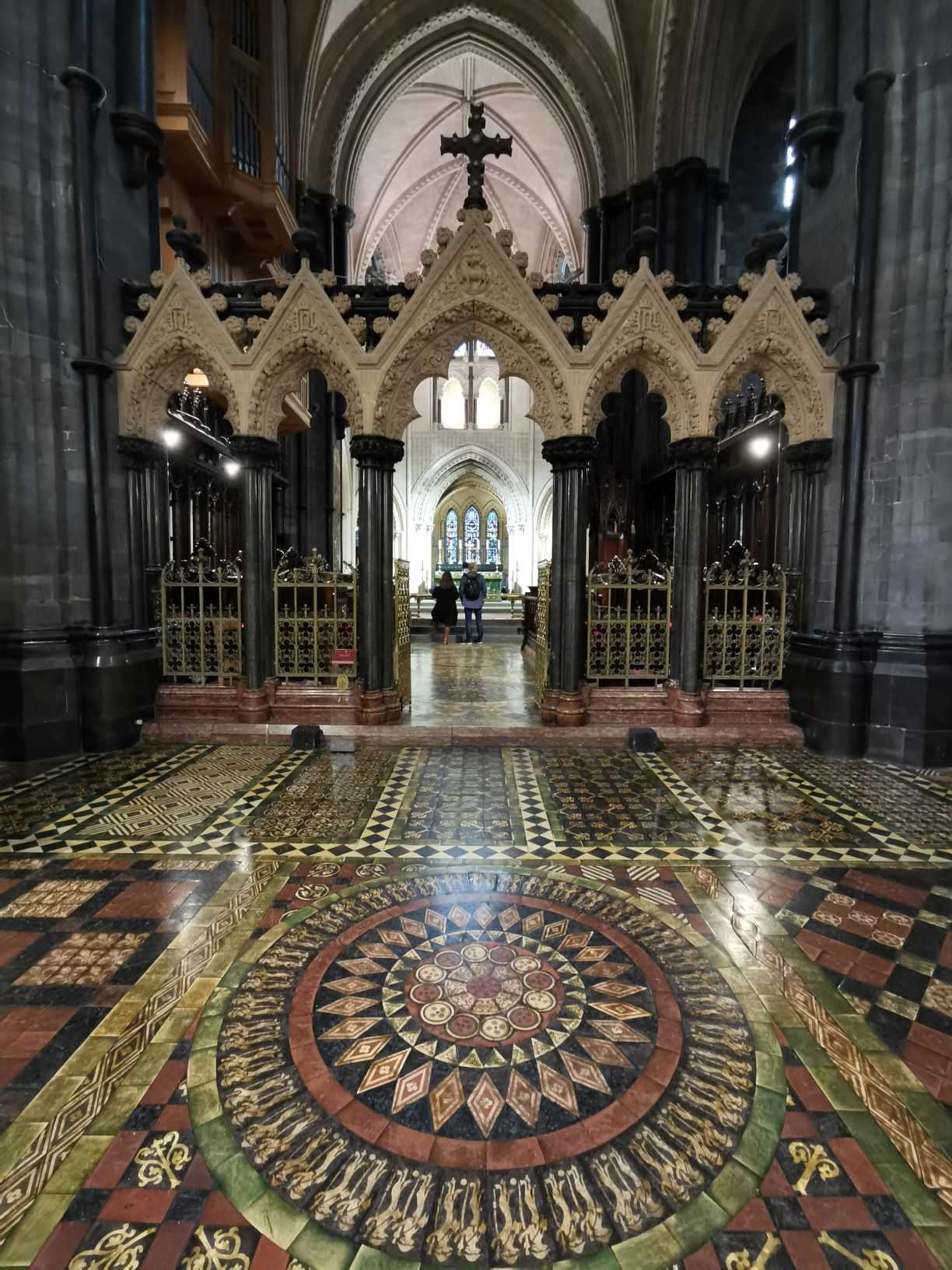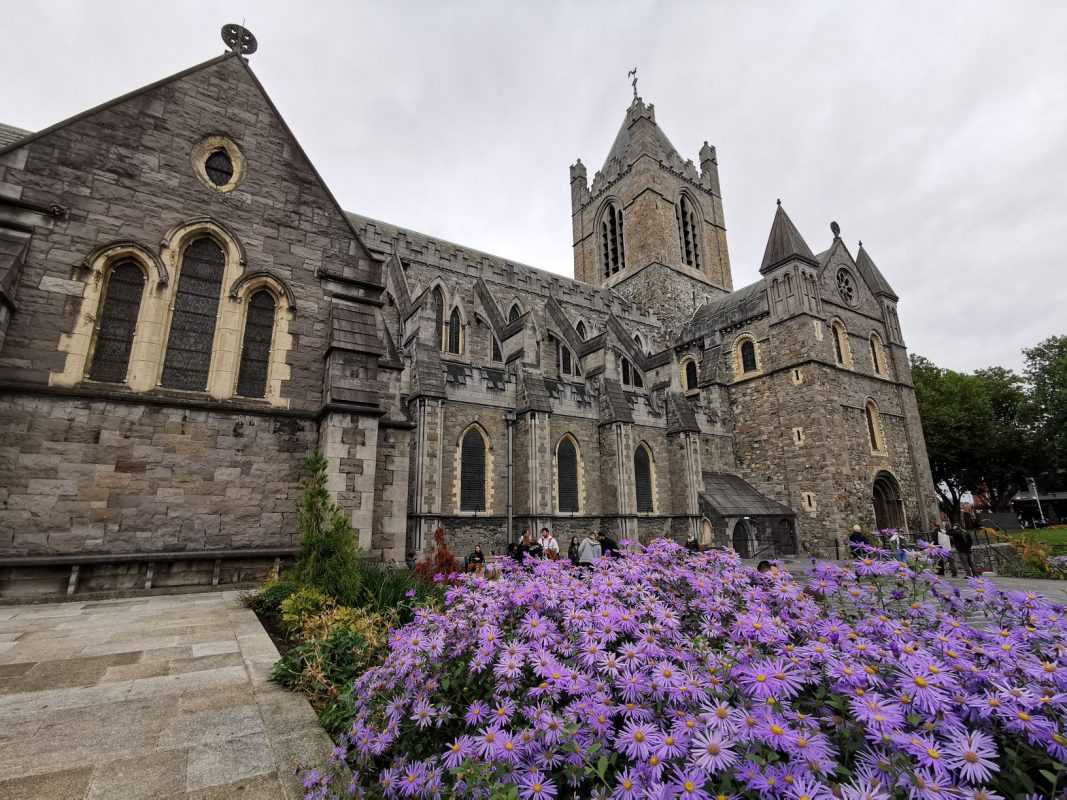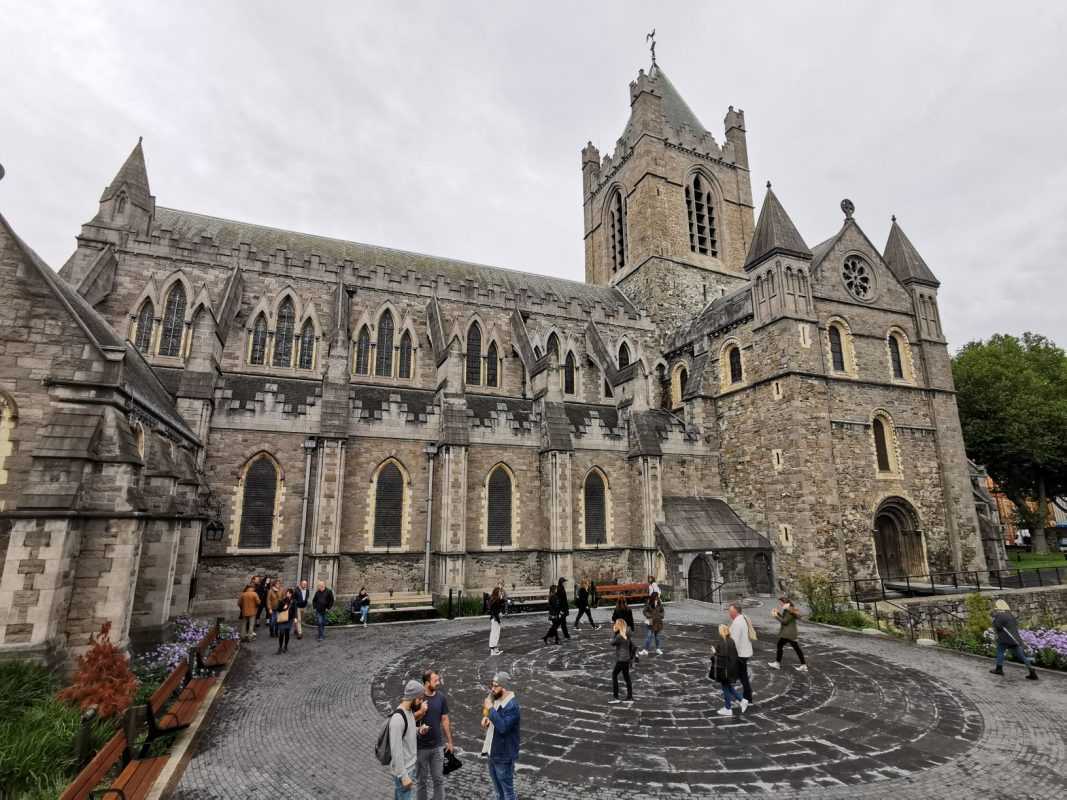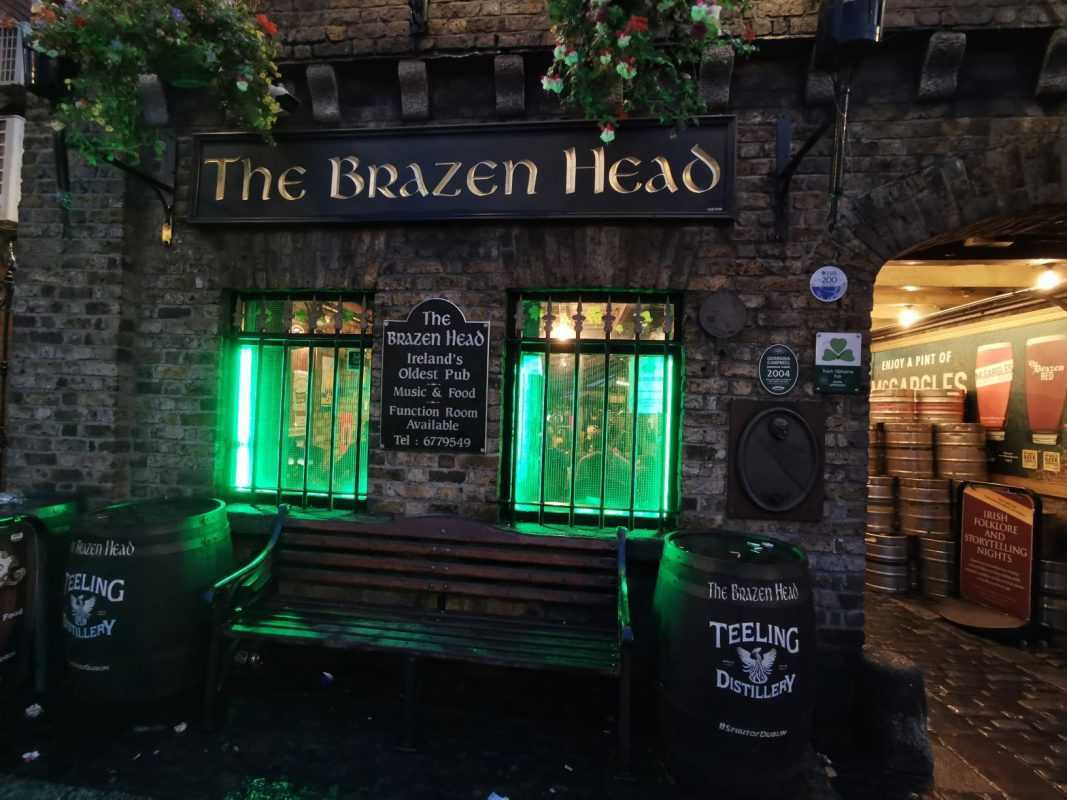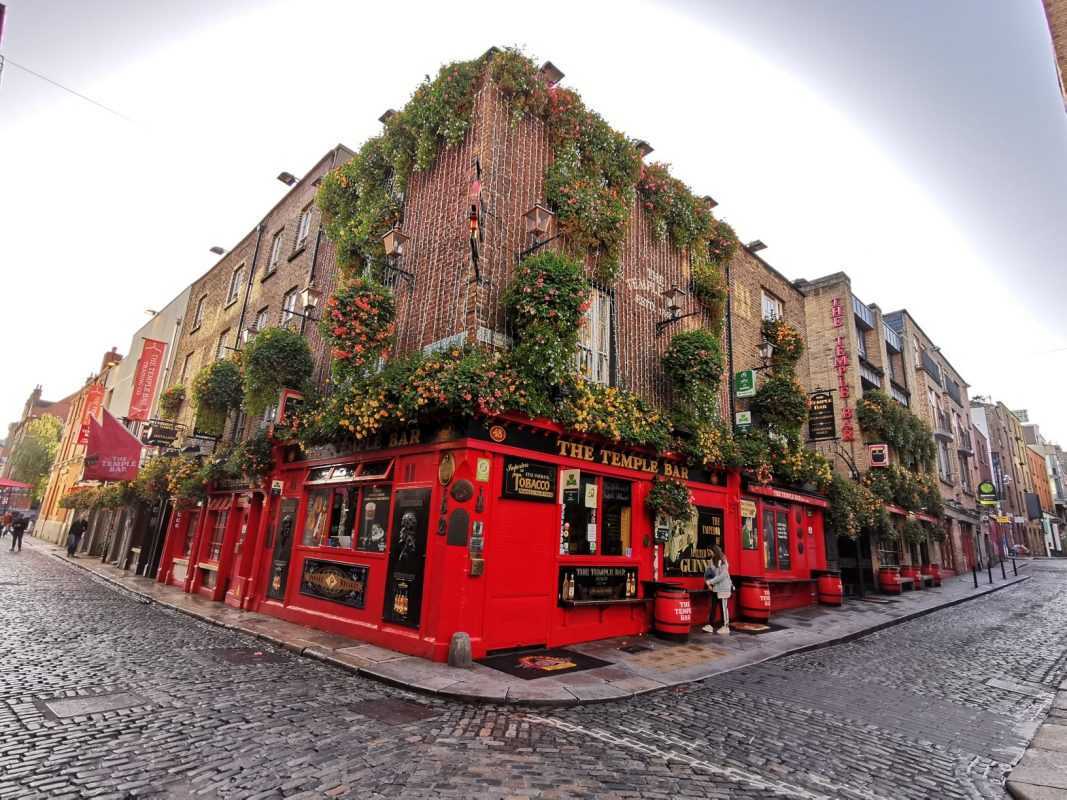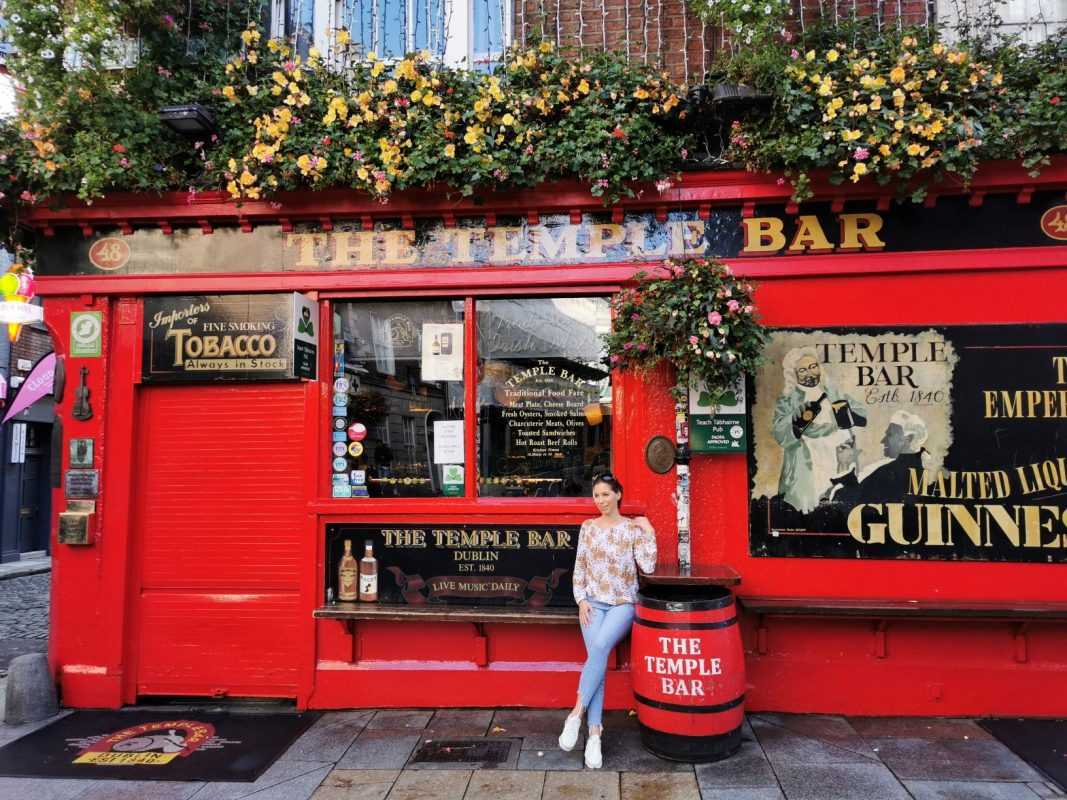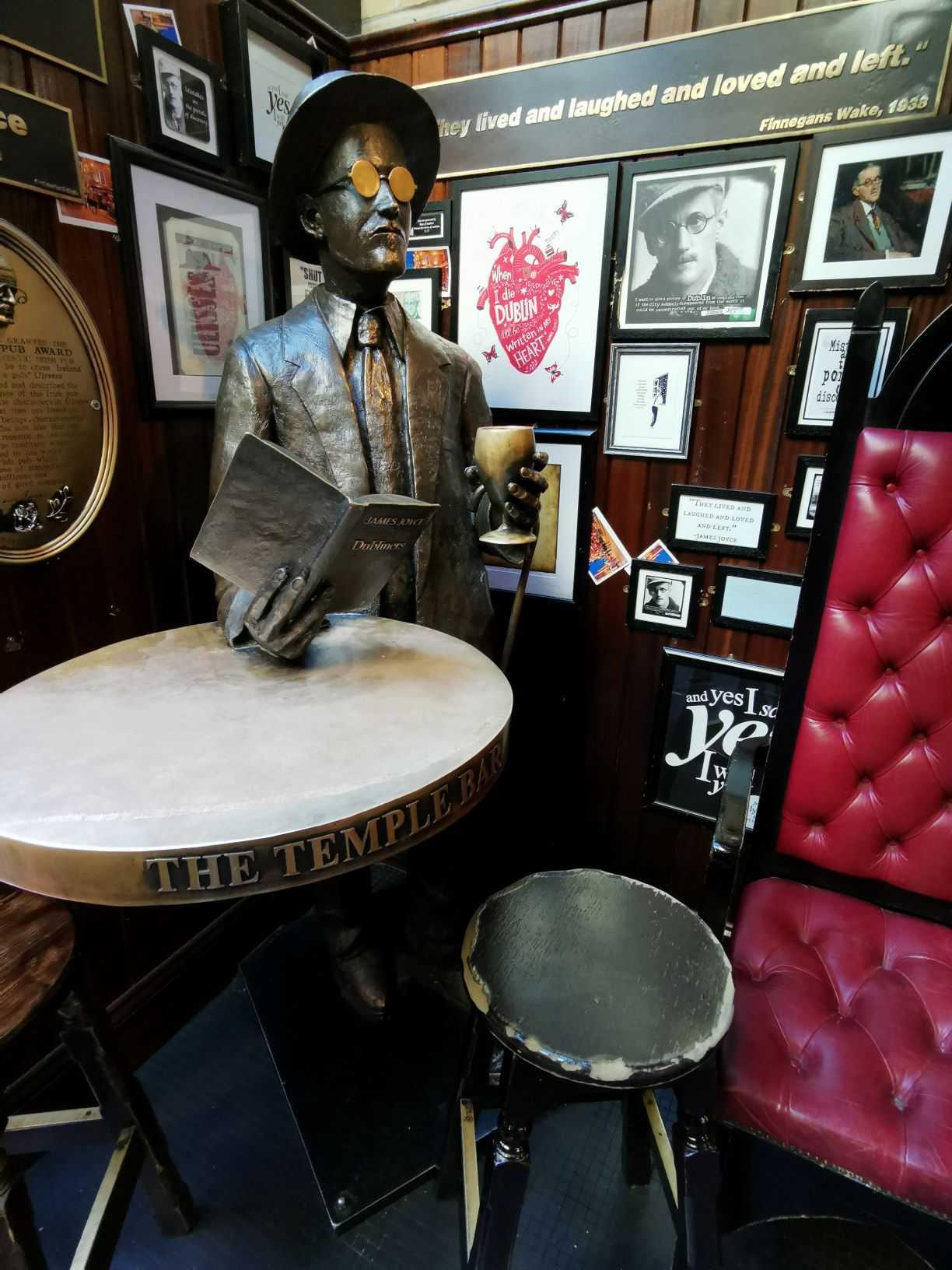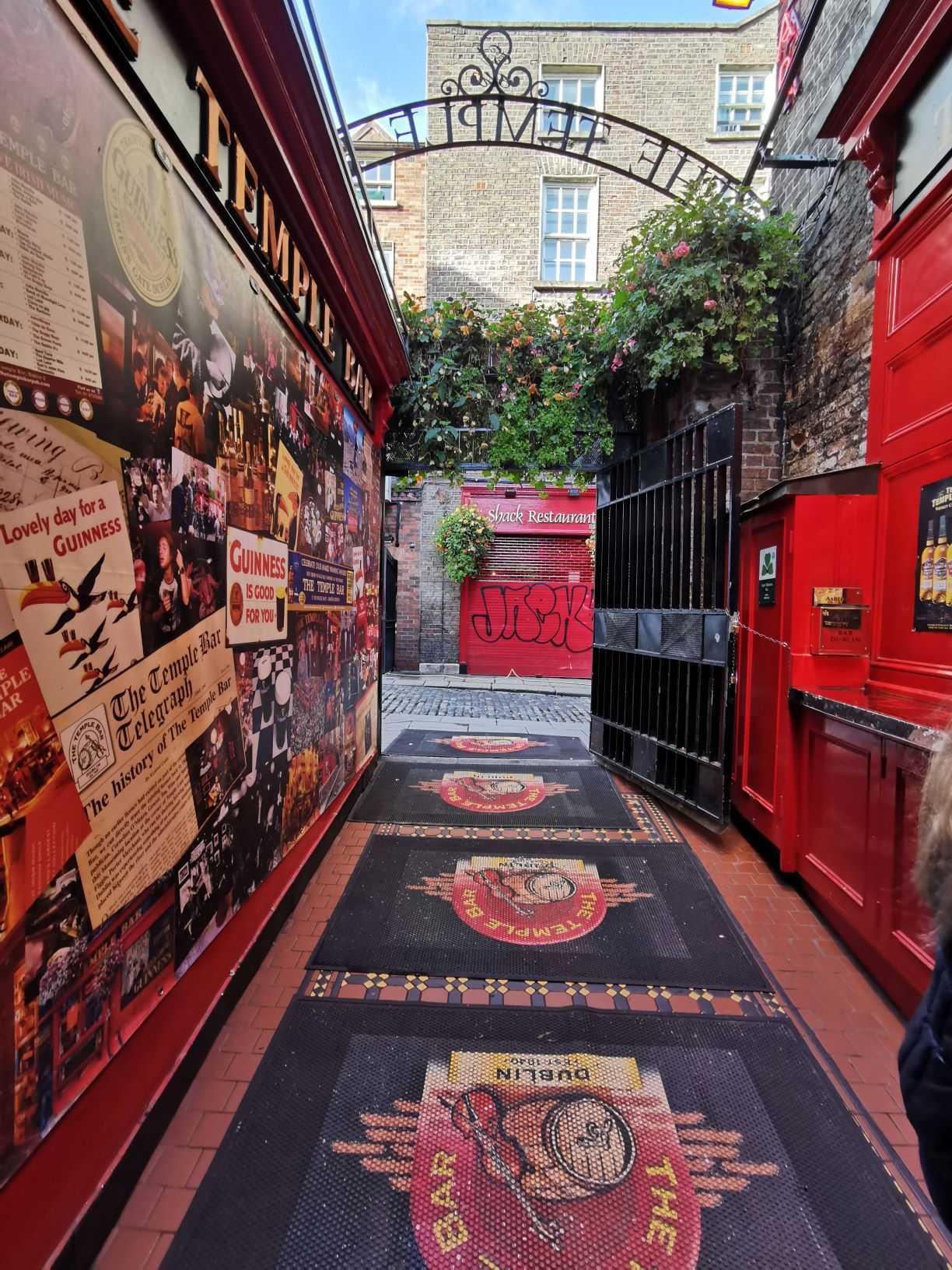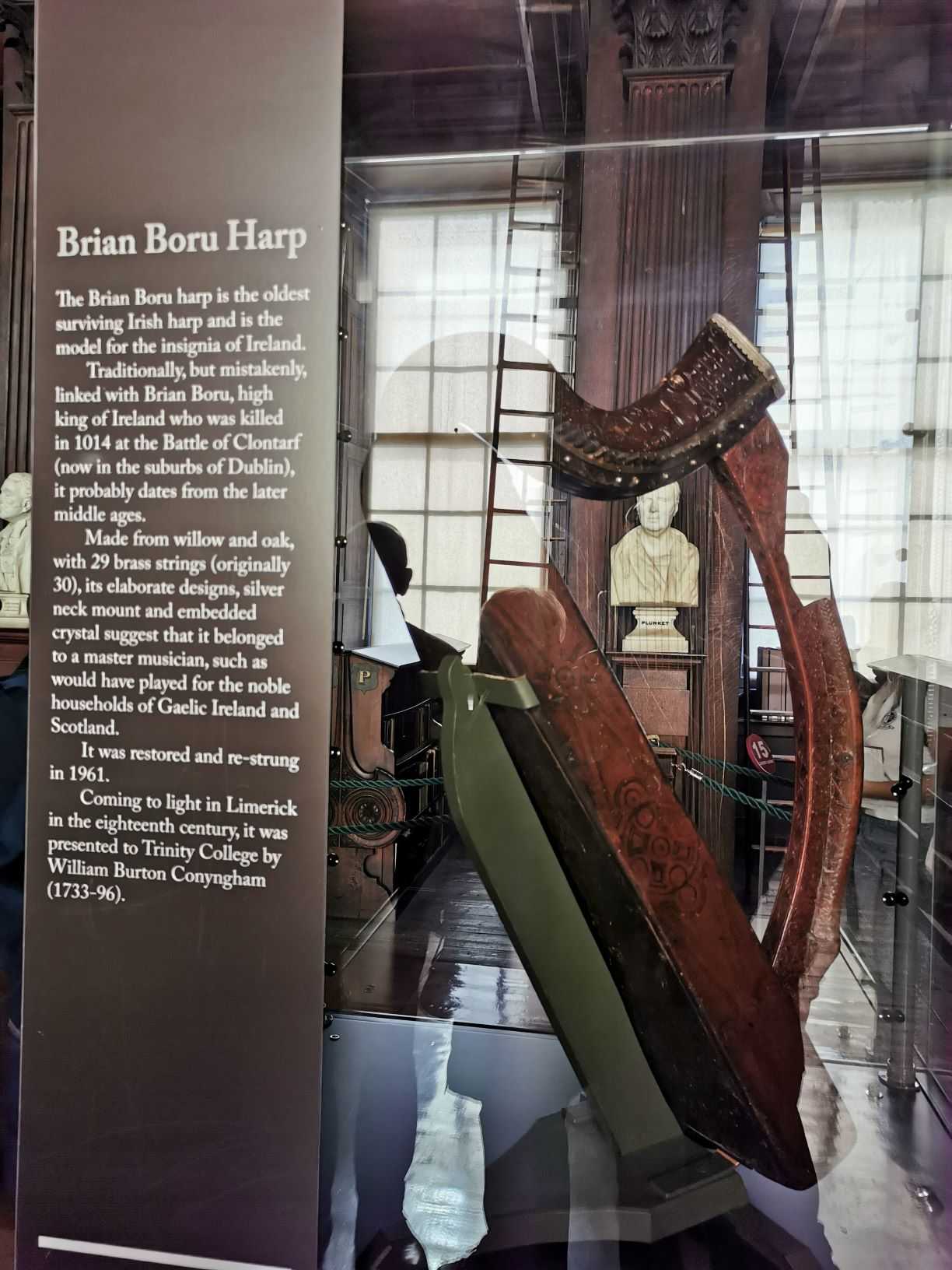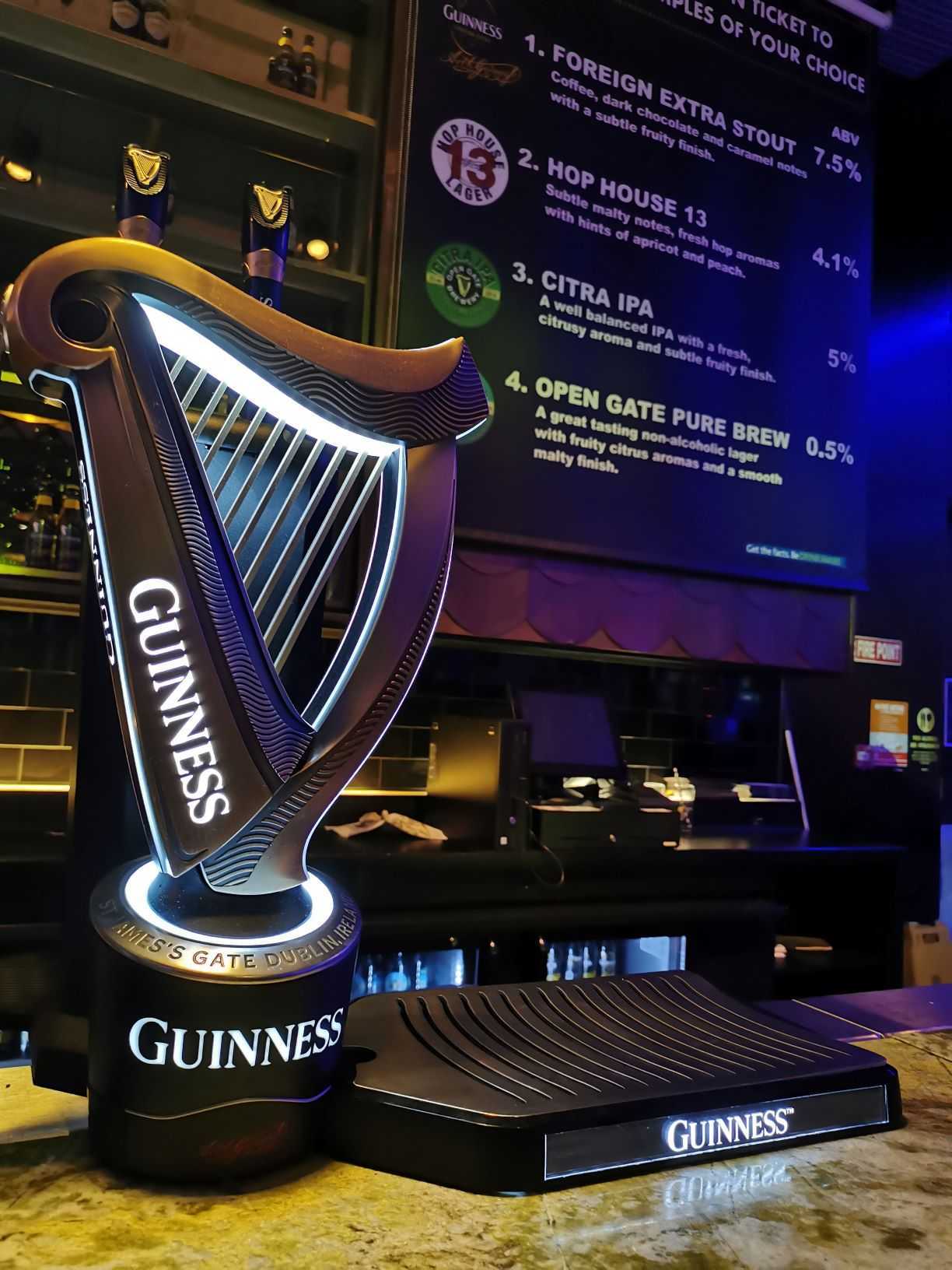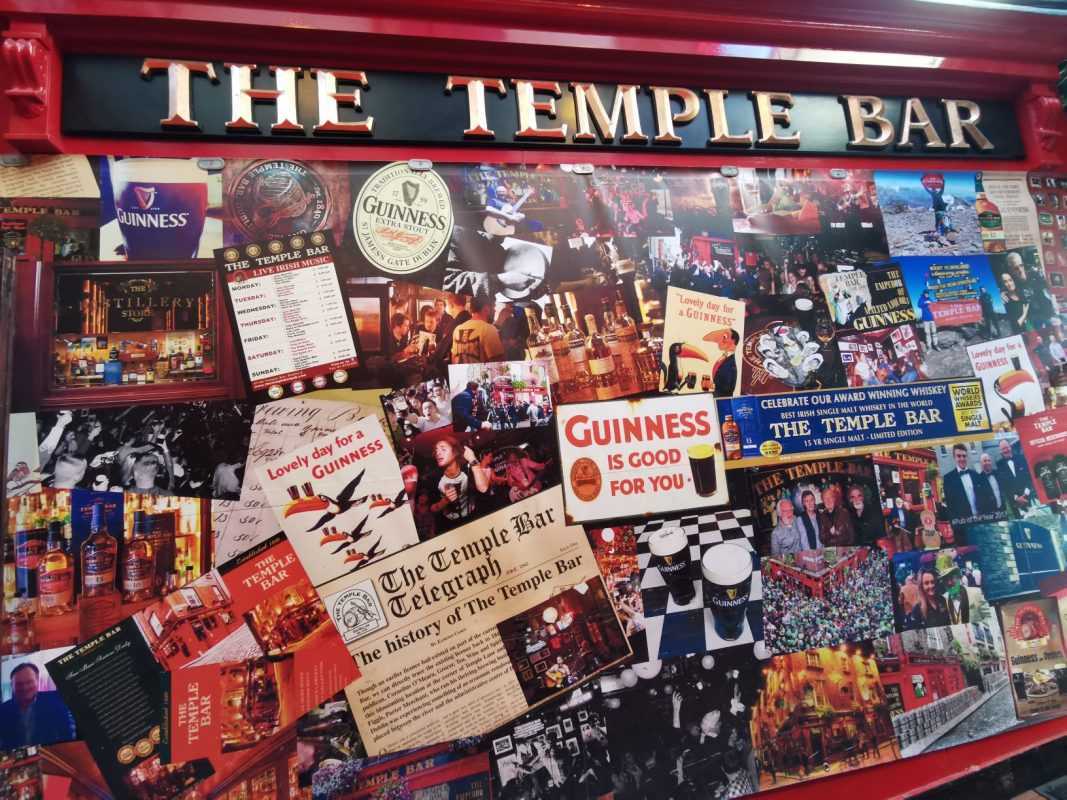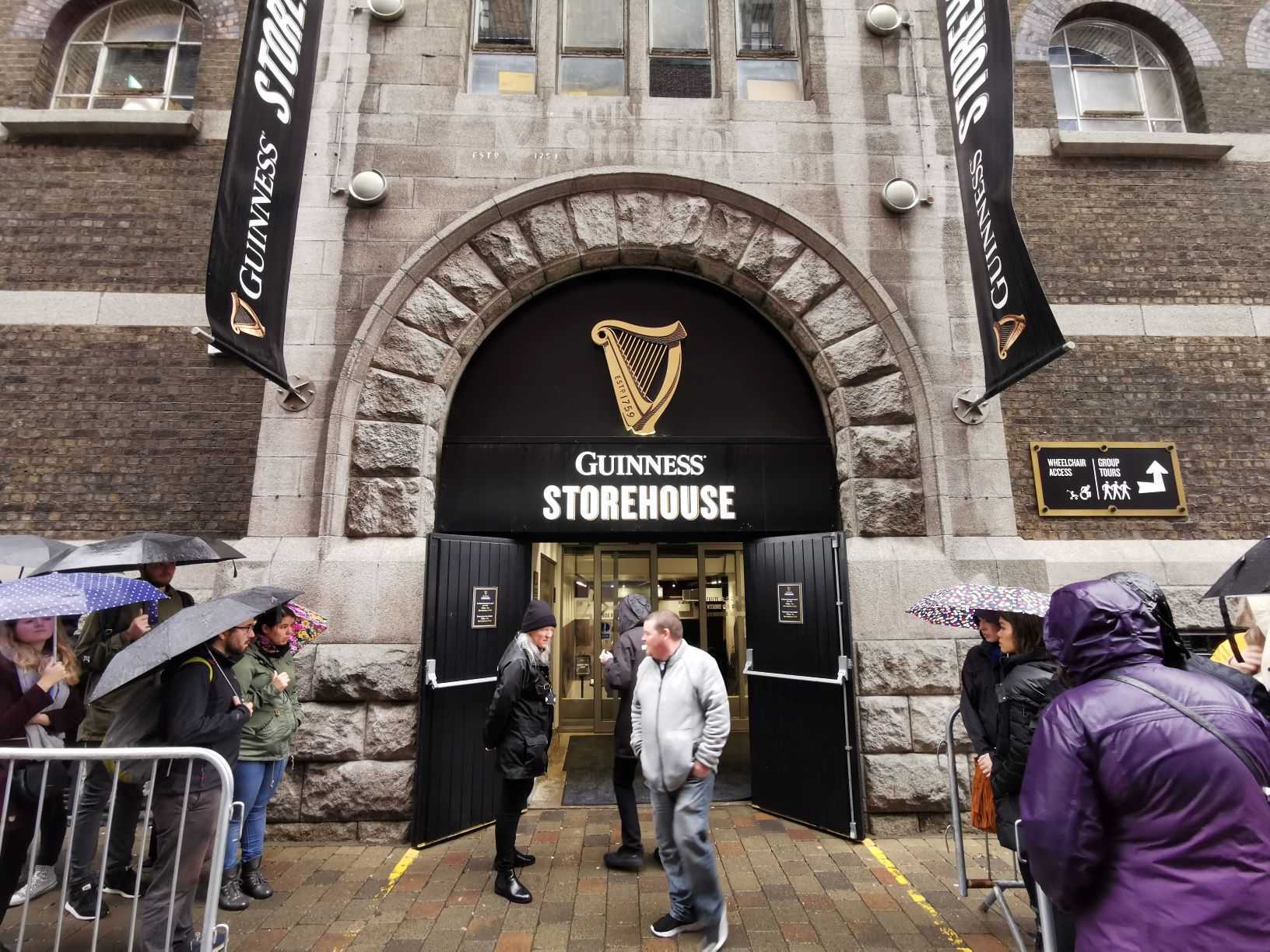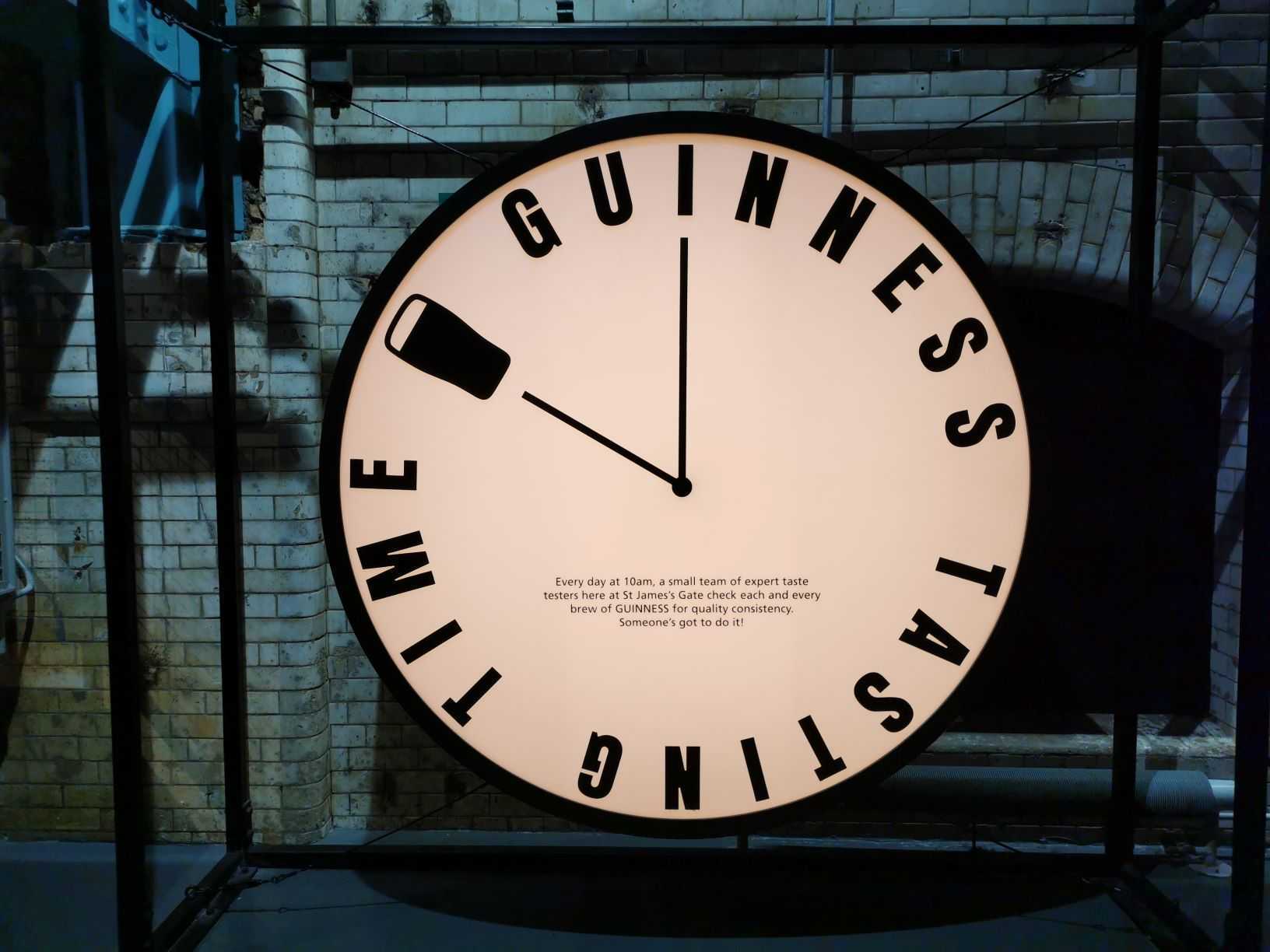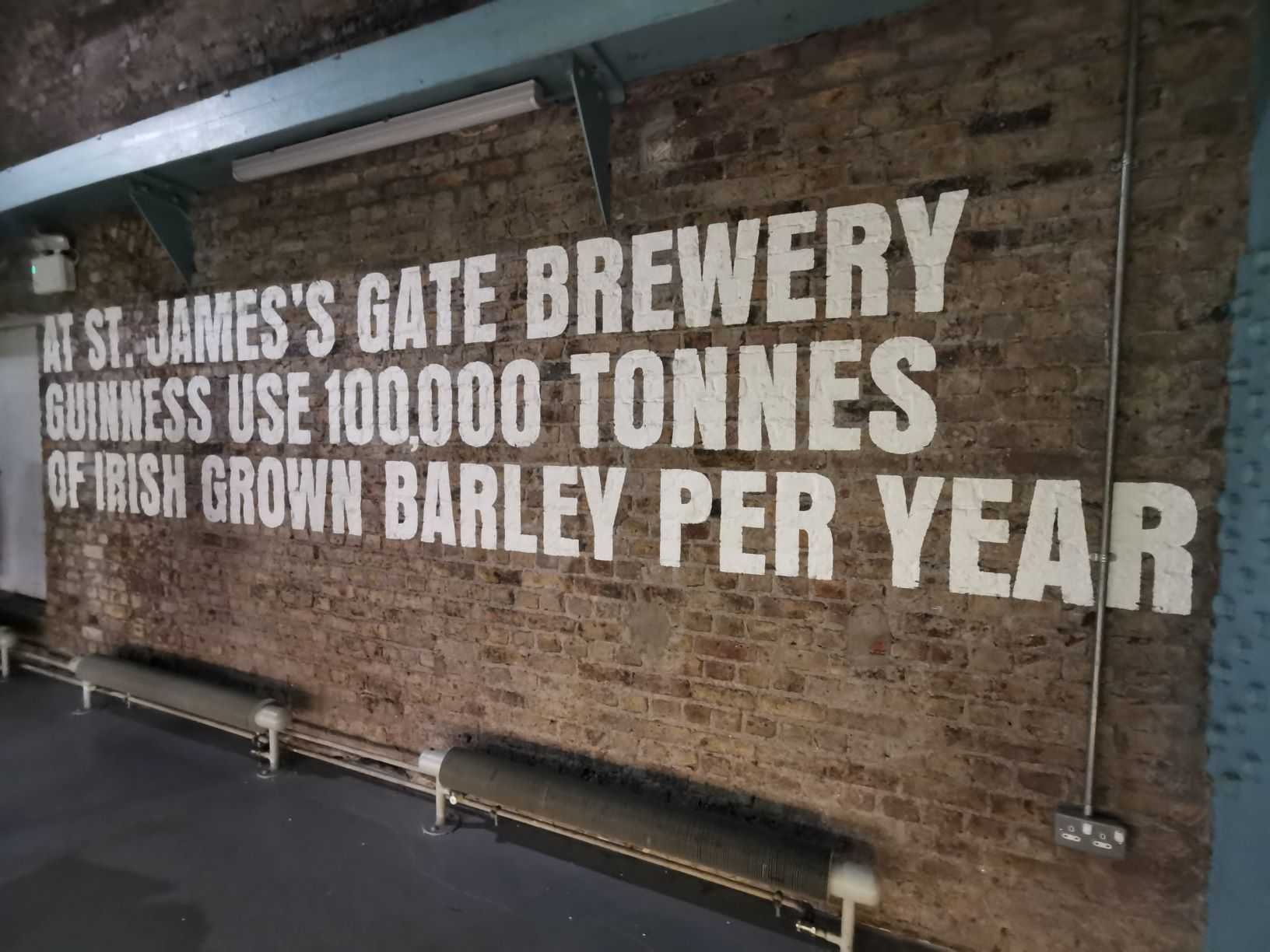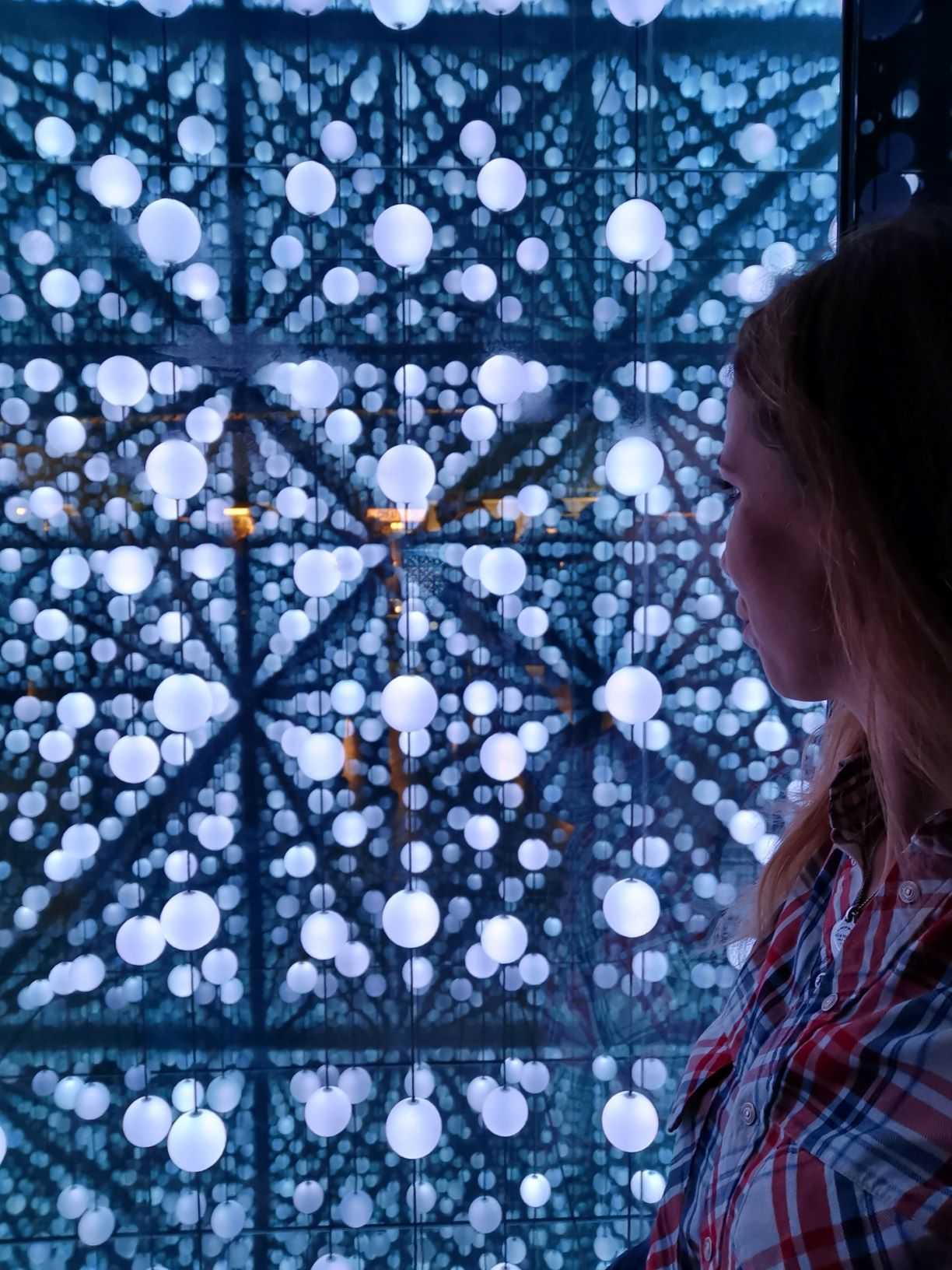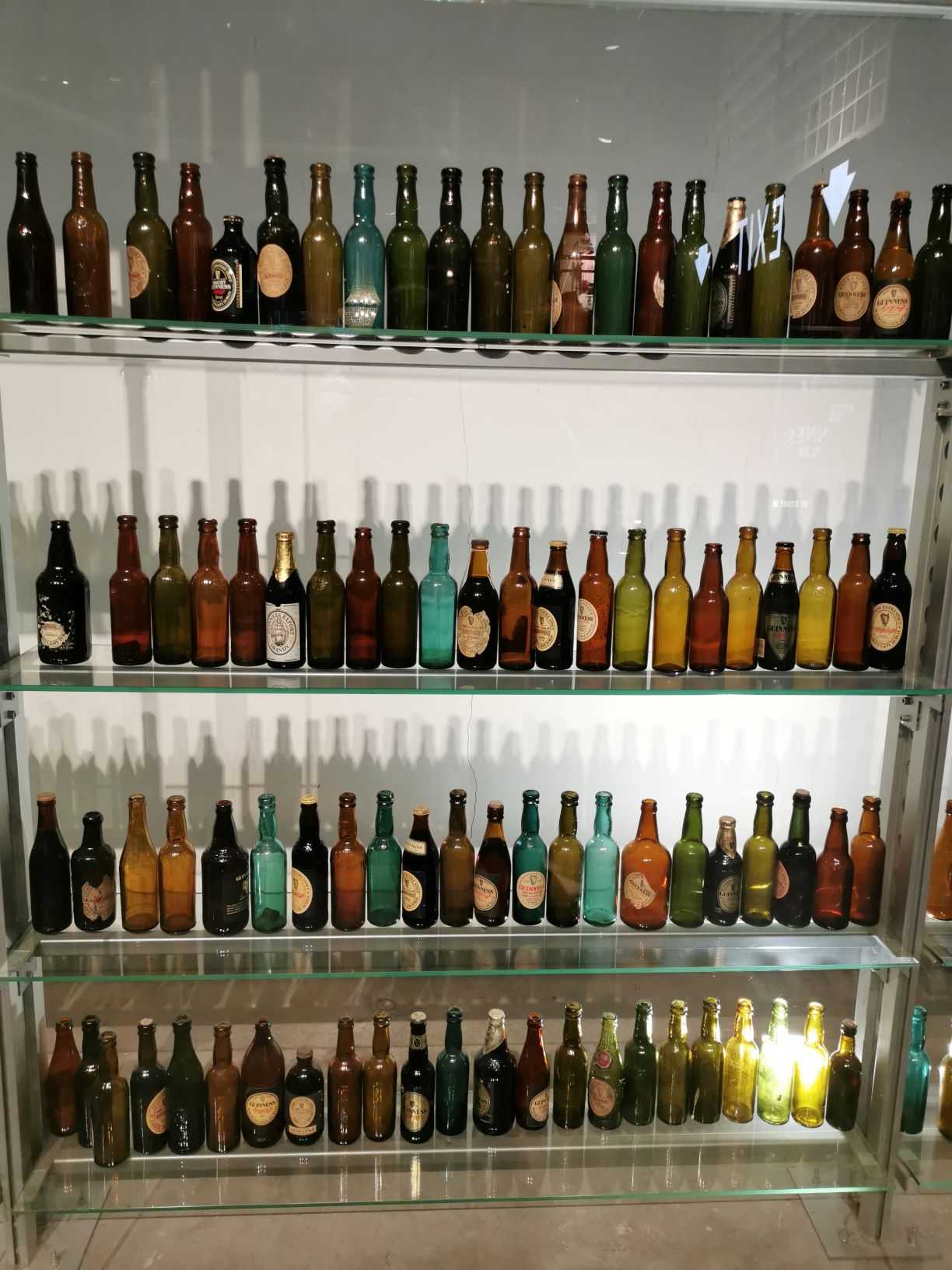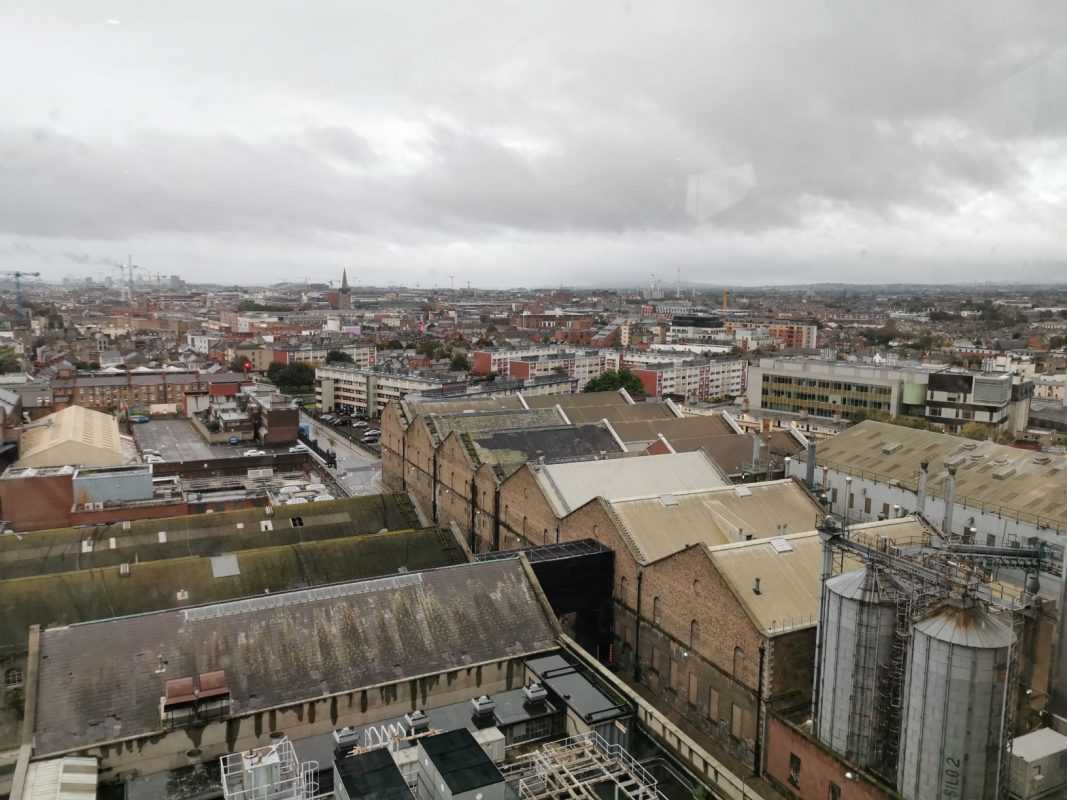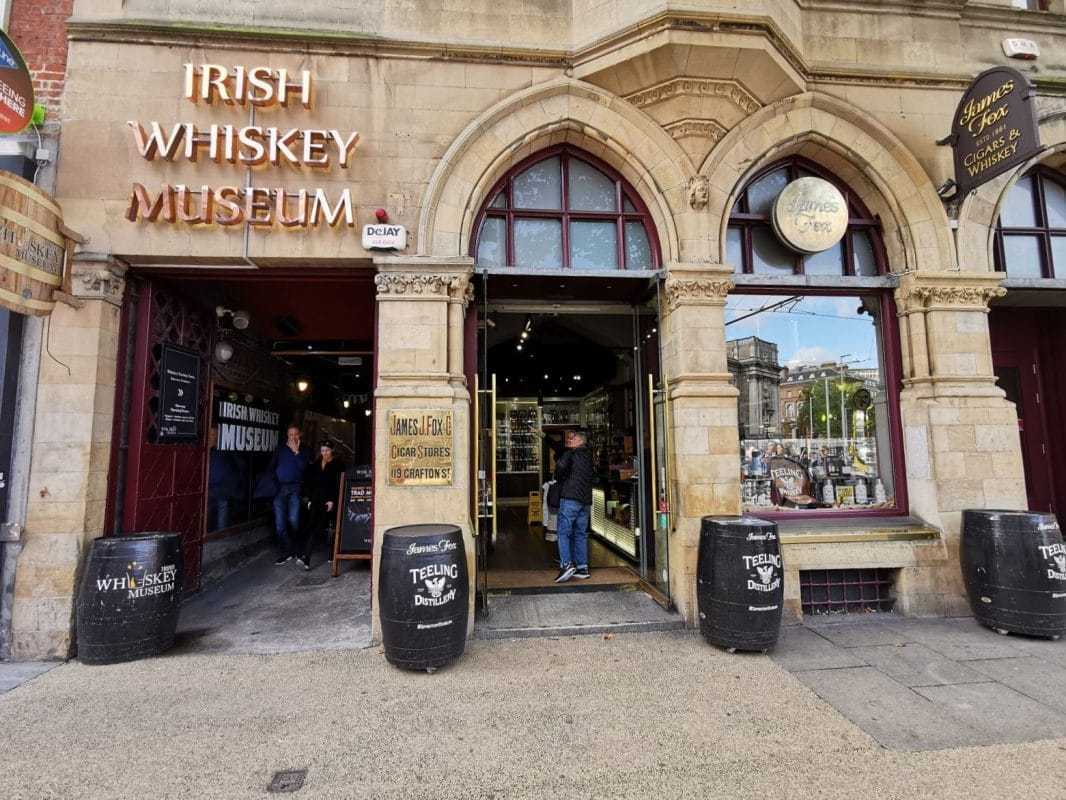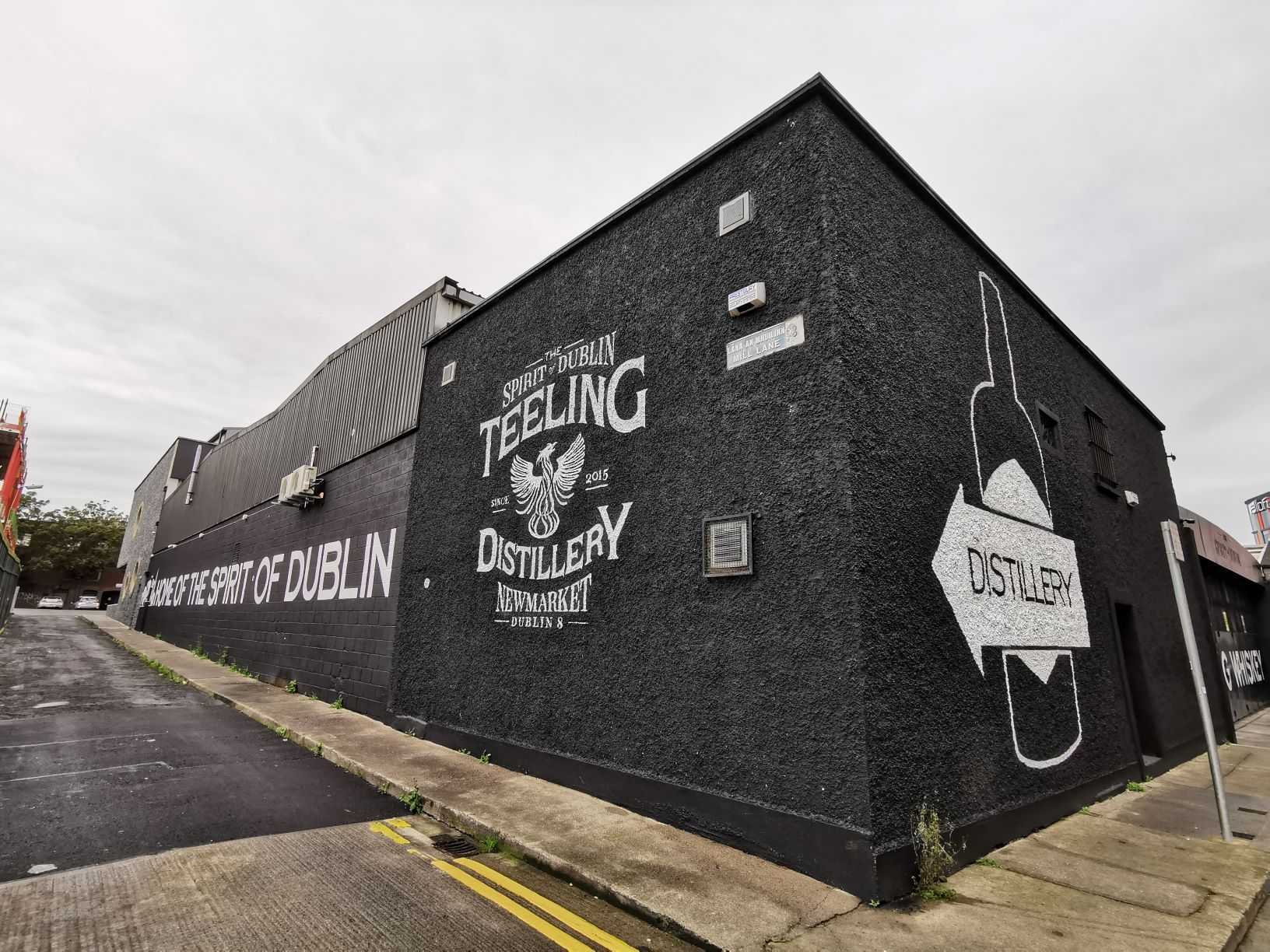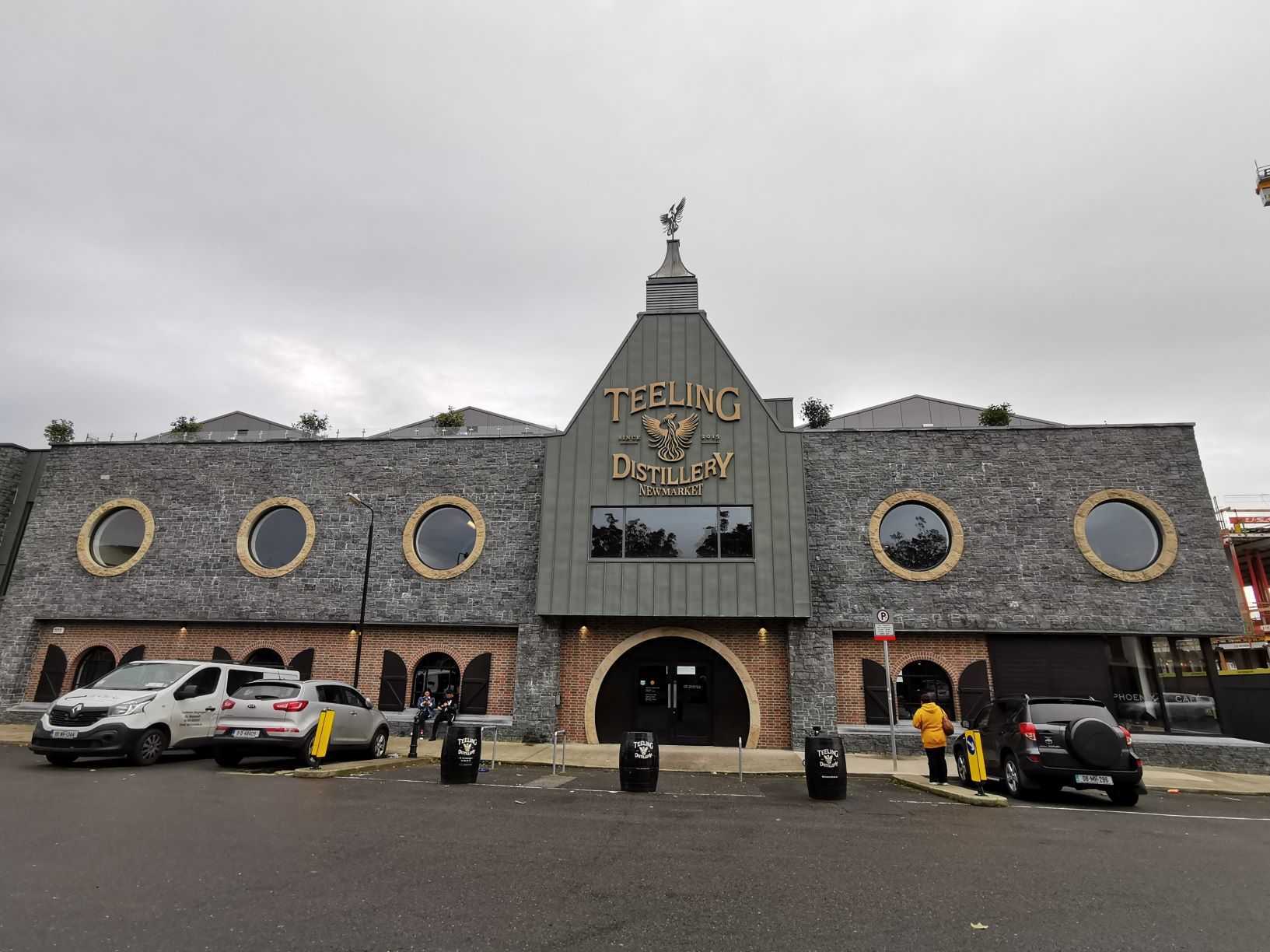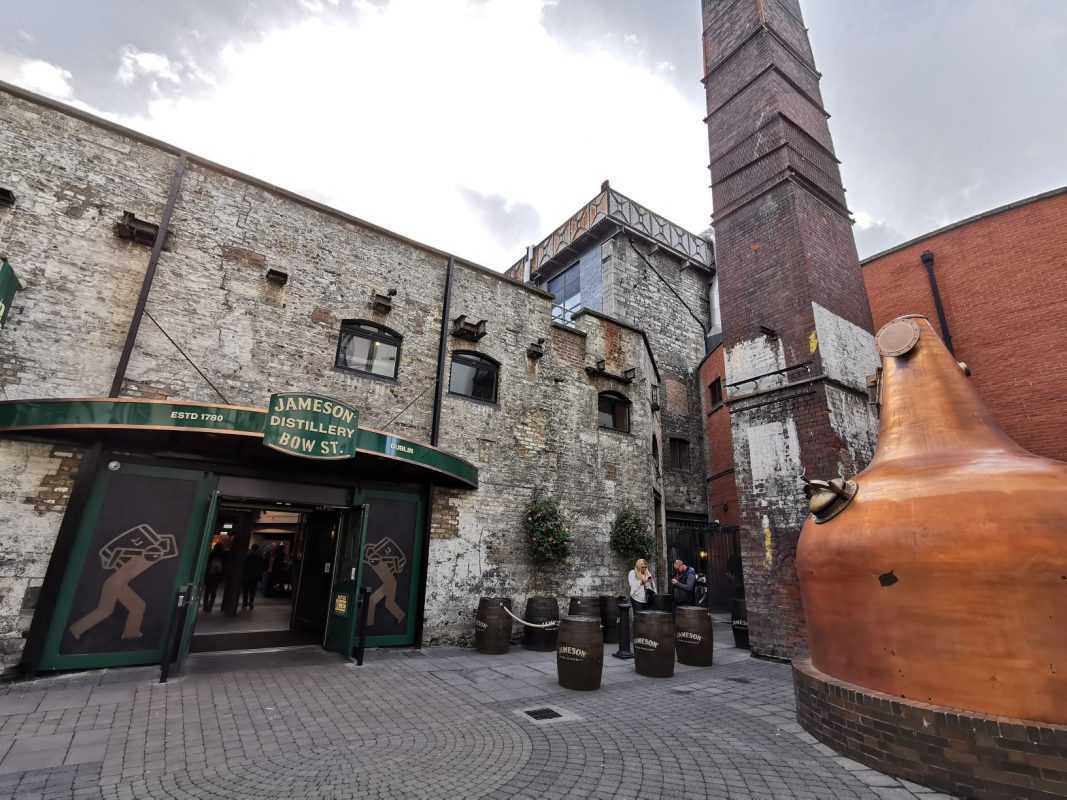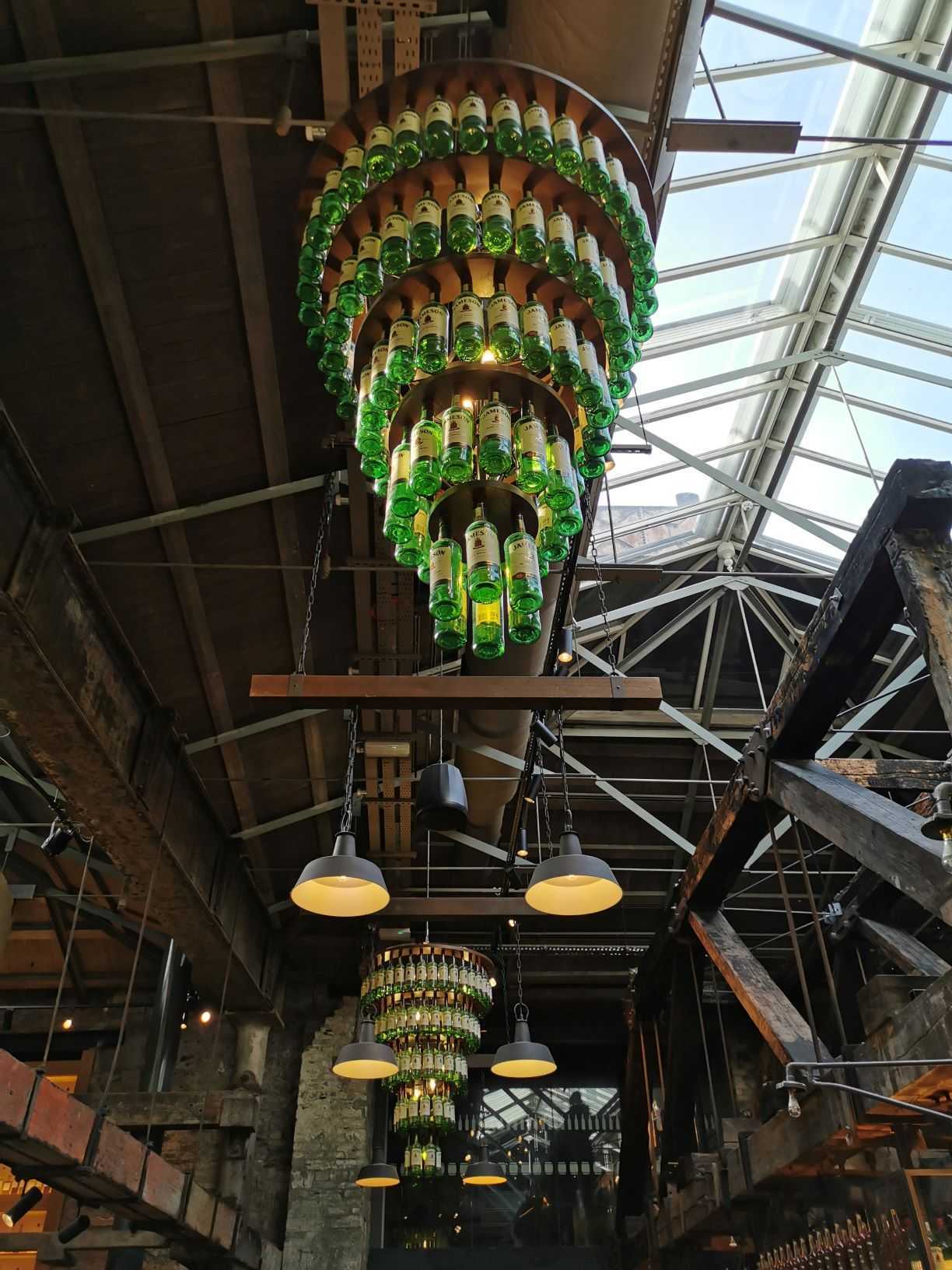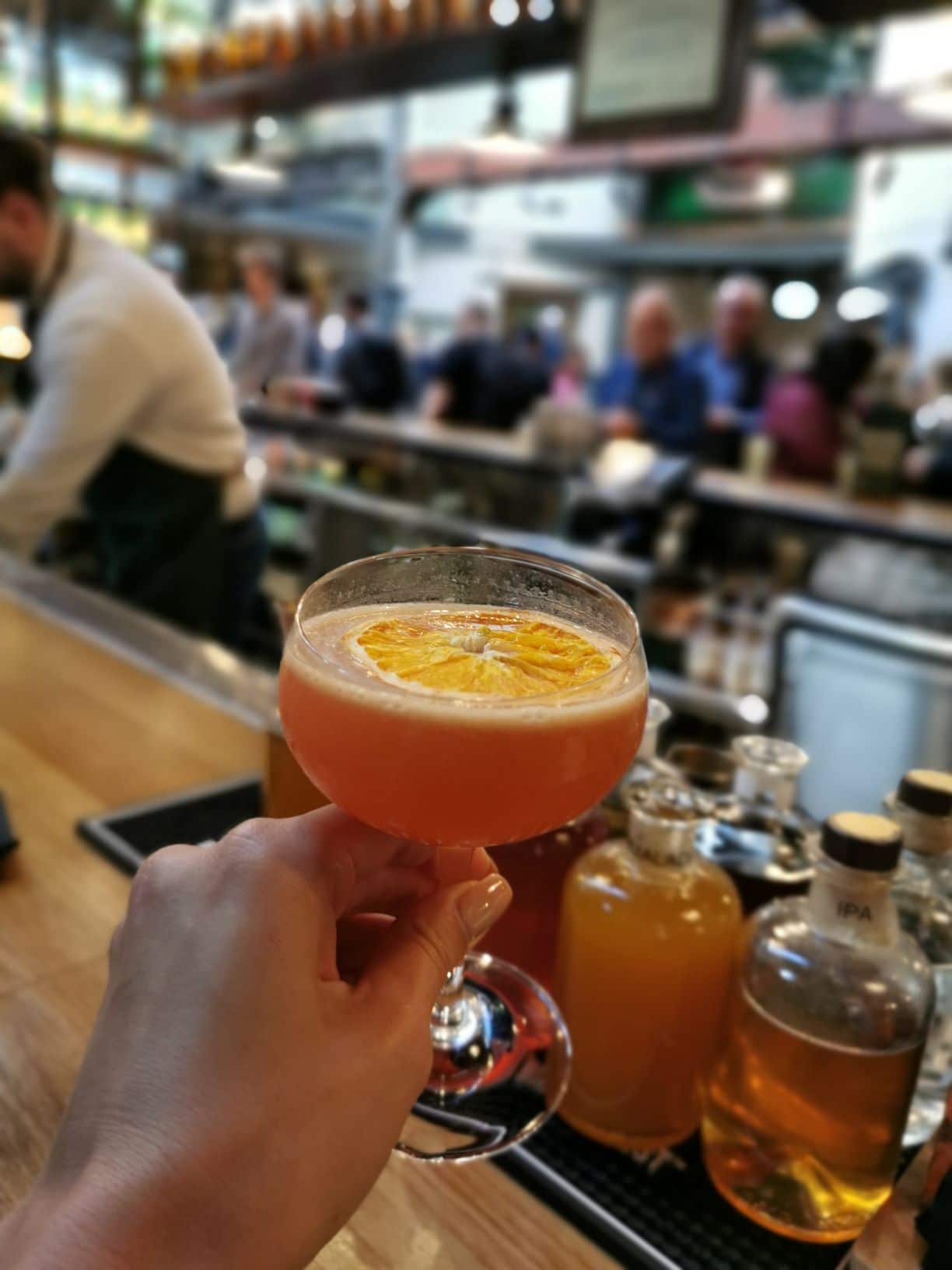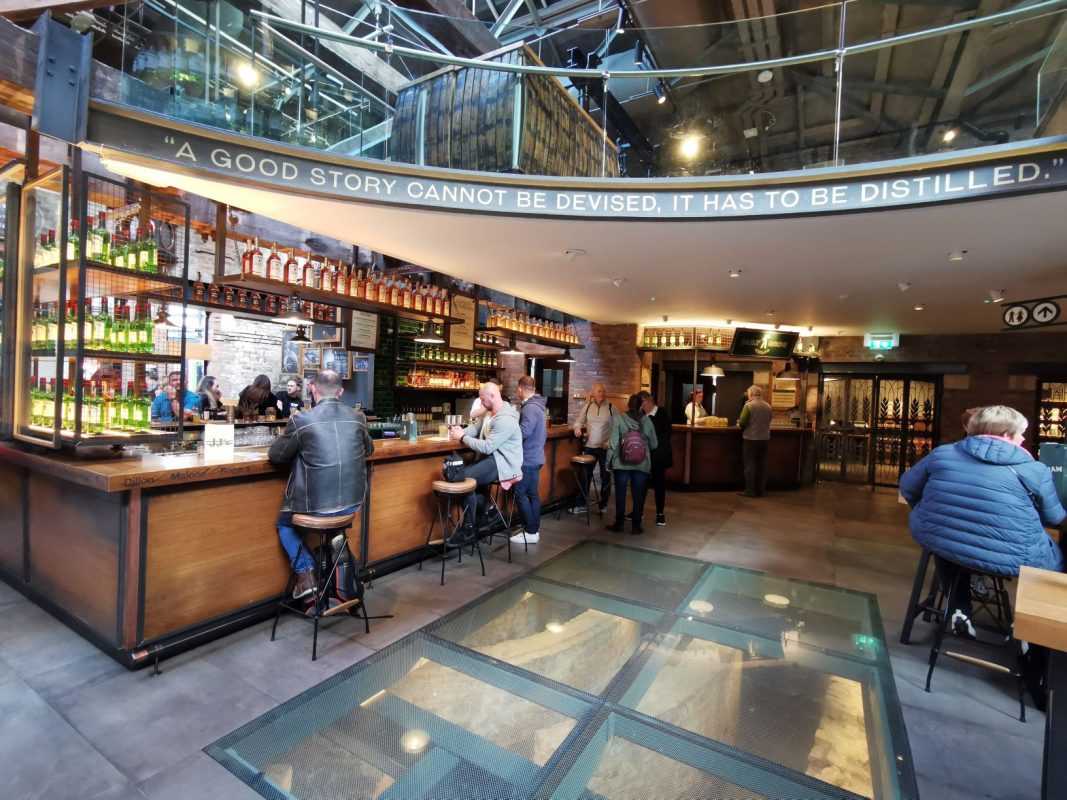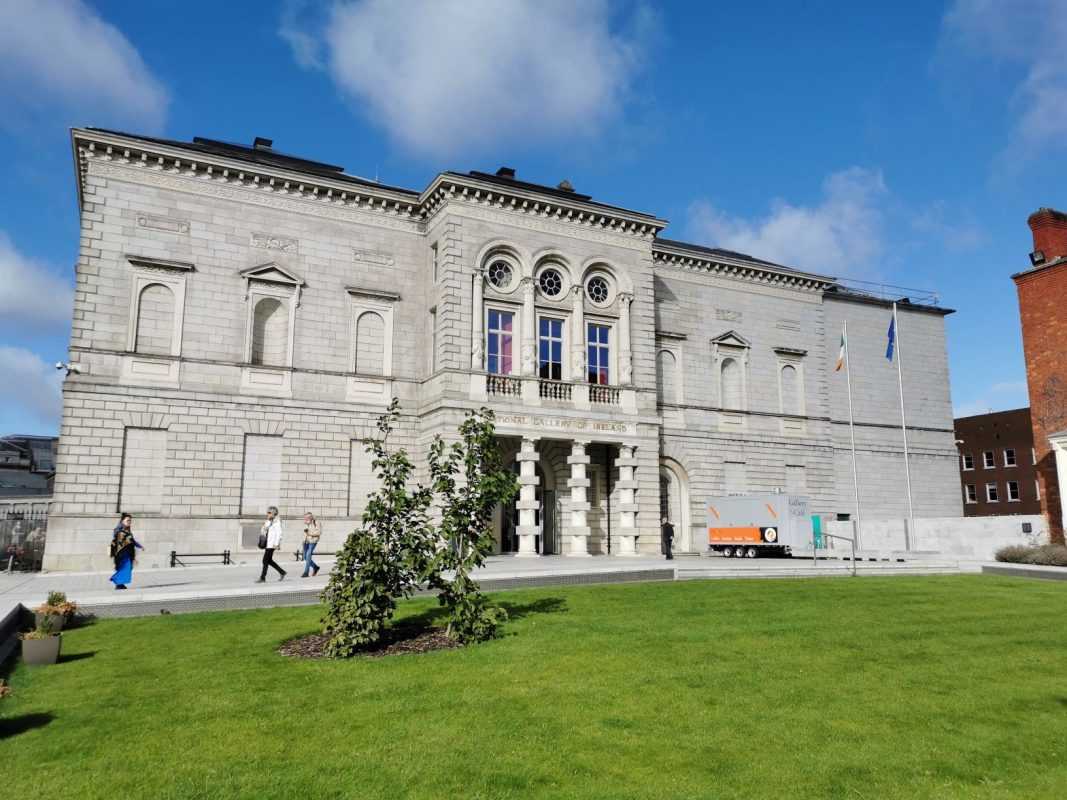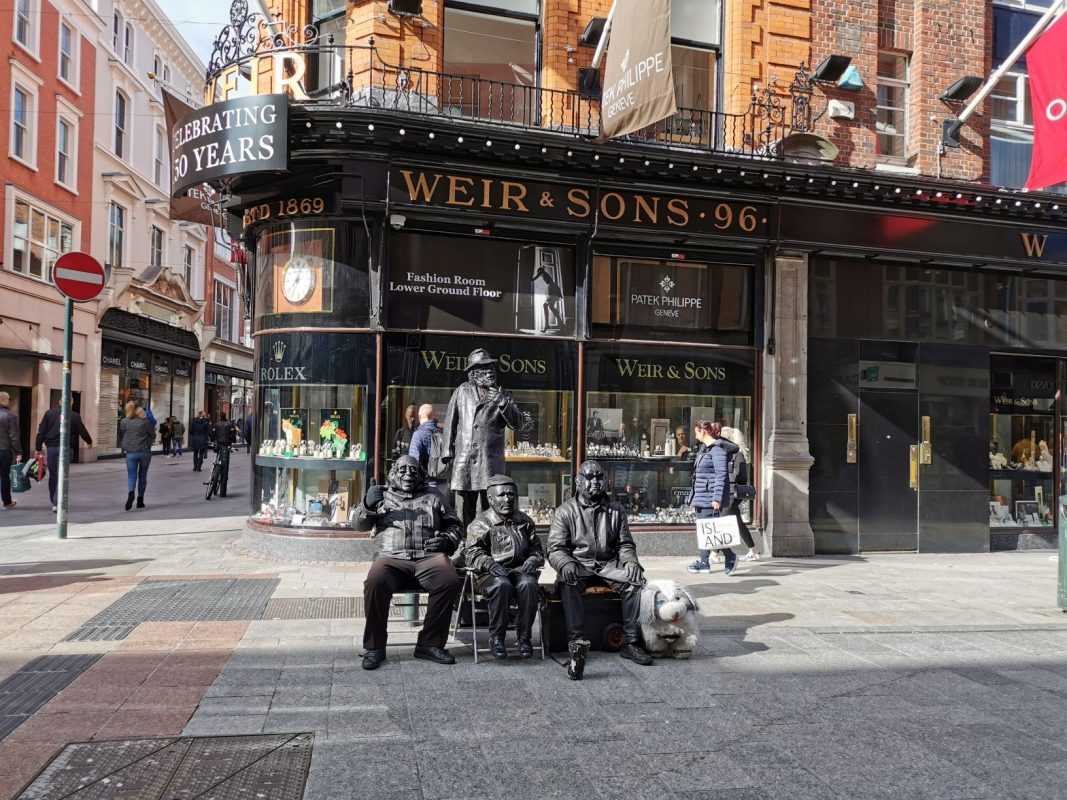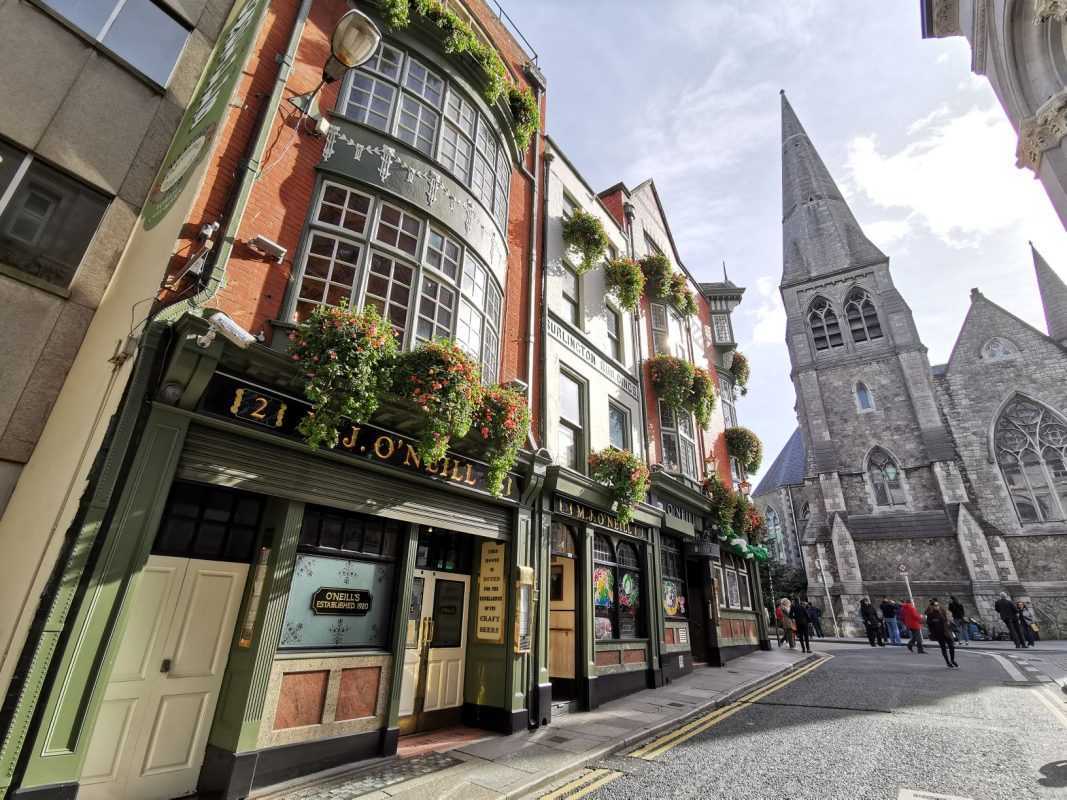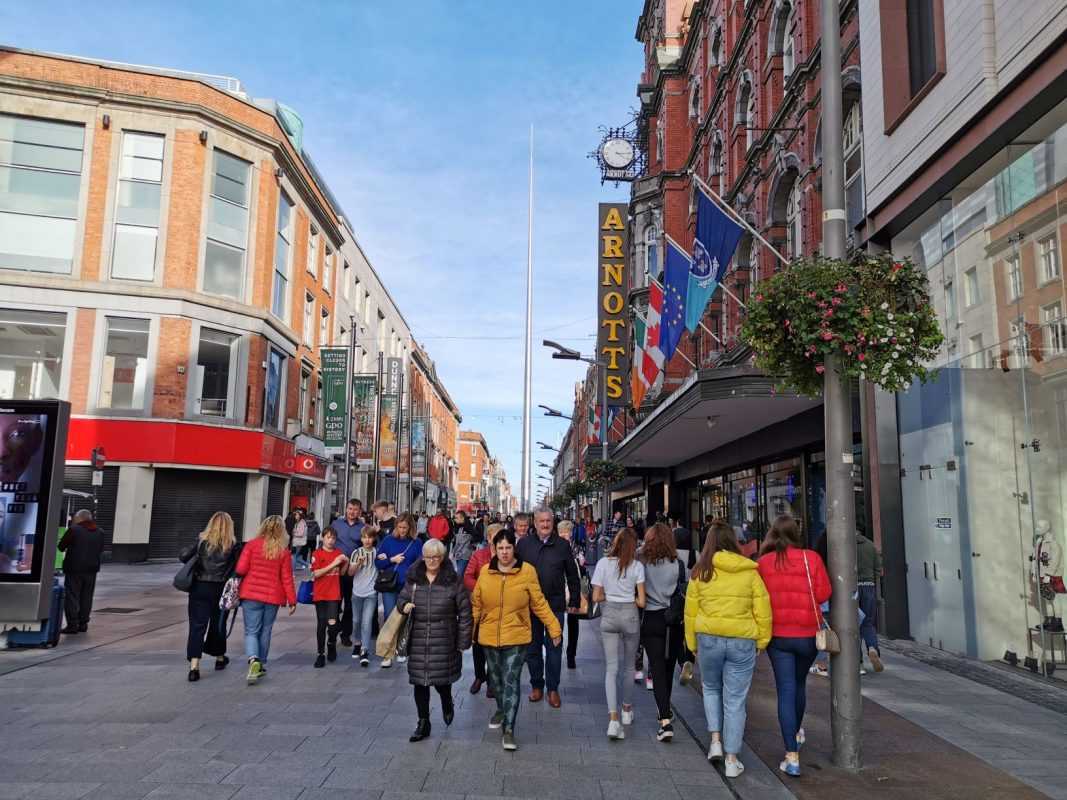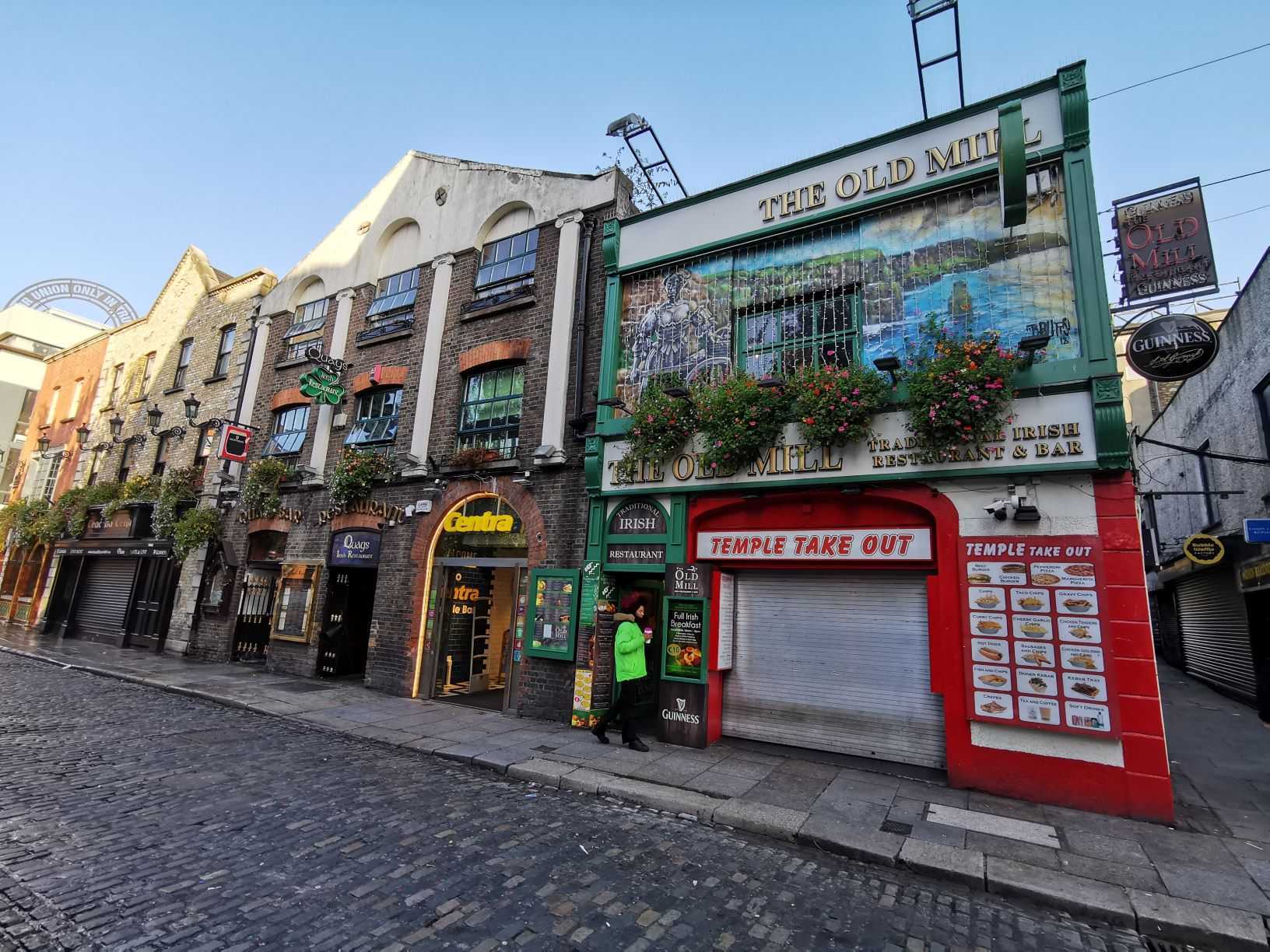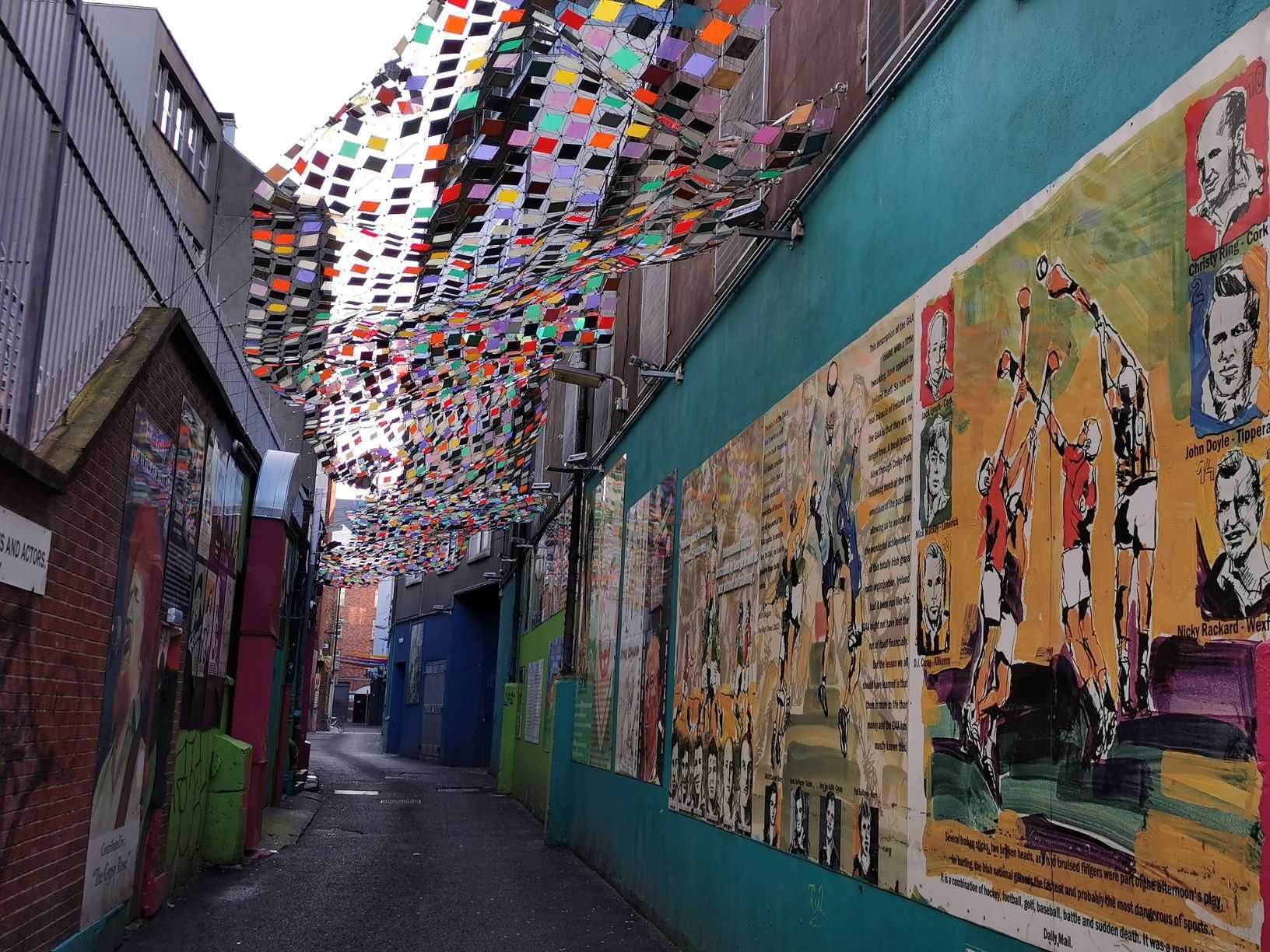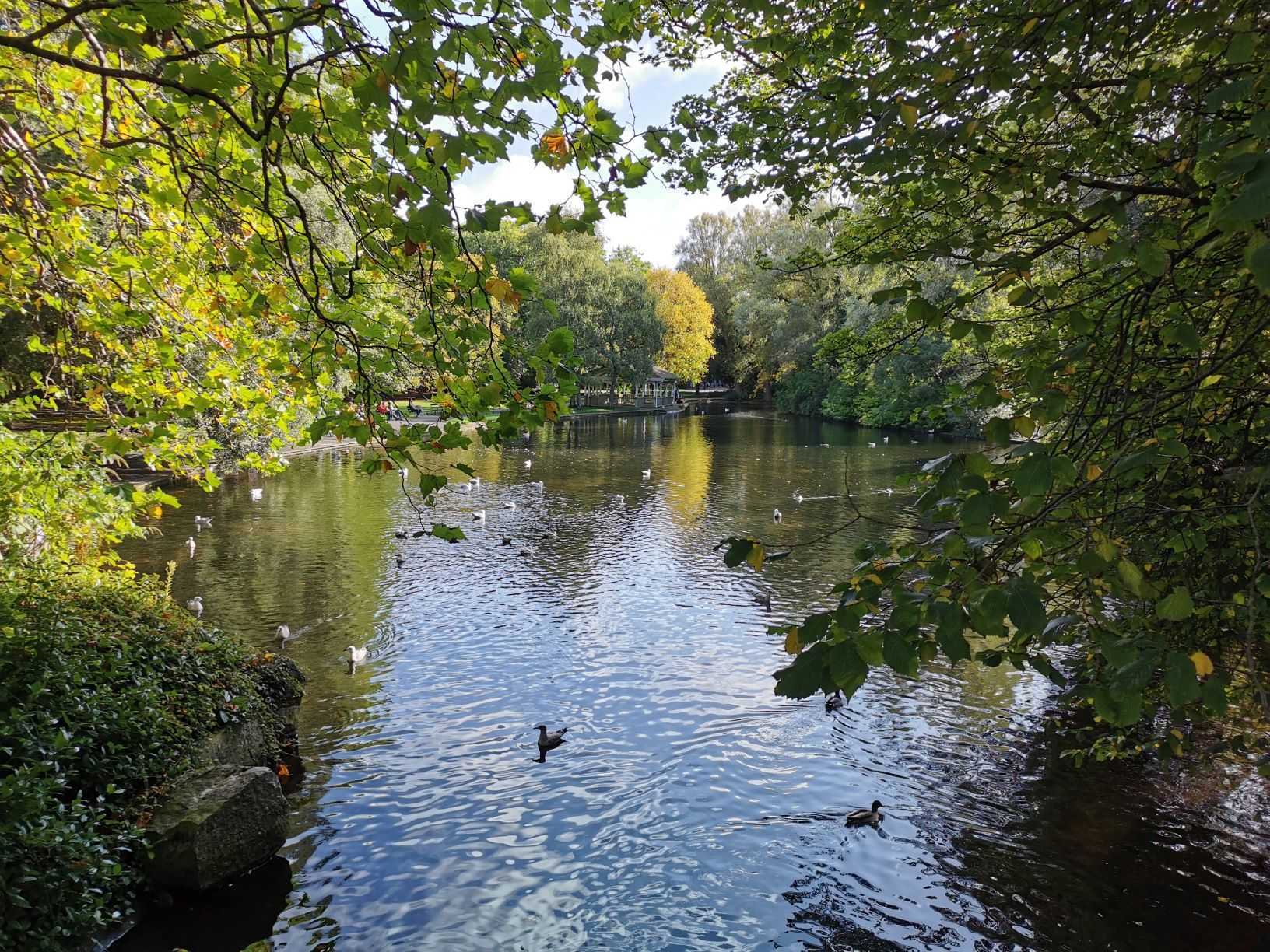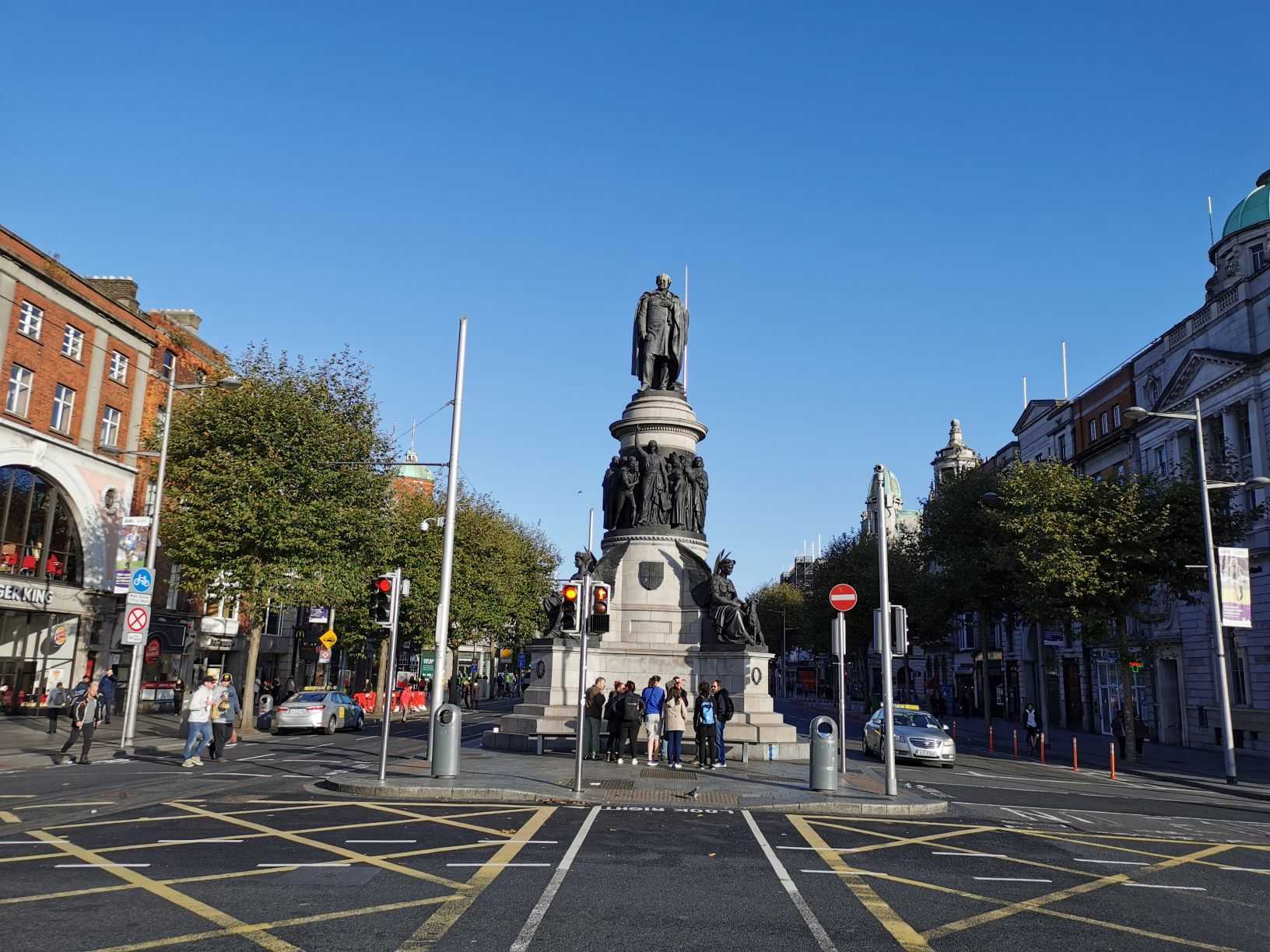What comes to mind the first time you hear the name of Ireland? The endless green fields with the lambs? Or the red-haired men and the Irish step dance? Maybe the lucky leprechauns and the four-leaf clover? If none of these, I bet one of those Irish drinks, like whiskey, beer or coffee, will be on your Irish list. For a weekend, I traveled to Dublin, for the first time in my life alone (I wrote about it here) to get a taste of the Irish’s unadulterated good cheer. And to get a look at the dark lake. The name of the city, Dubh Linn means dark lake in the ancient Gae d’Or language. But Dublin is anything but not dark and quiet, but a lively and continuous bustling metropolis, ideal for a longer visit or even a weekend trip. Without the need for completeness, I’ve put together a bouquet of attractions worth visiting once you get to the Irish capital.
Molly Malone
Molly Malone is a popular Irish ballad and Dublin’s unofficial anthem (you can listen to it here). The tragic heroine of the song is about a girl from the 17th century who sold shellfish by the day and worked as a prostitute at night and died of cholera at a young age. It is not known whether she was a real person or if she was just fiction, but in any case, her person is surrounded by a great cult in Dublin. In 1988, she was also erected with a statue, which is now on Suffolk Street. Every year on June 13, Molly Malone Day is held and flowers flood the girl’s bronze statue.
St. Patrick’s Cathedral
This is the largest Catholic church in the country, named after St. Patrick, the patron saint of the Irish. Much is not known about his life, but it is certain that as a missionary he traveled all over Europe in the 5th century and returned the Irish to the Catholic religion. It is said that St. Patrick used a three-leaf clover to explain to the inhabitants of the emerald island the doctrine of the trinity, making the plant a symbol of everything in Ireland. A statue of St. Patrick was erected on the site of the church in 1191, while the oldest part of the building dates back to 1220. St. Patrick’s Cathedral has survived all wars, uprisings and attempts at reformation and is now the country’s most important religious institution, which welcomes believers with open doors. And tourists should pay €8 as an entrance fee, which makes me dissonance. The temple is God’s house, why should you pay to enter it. But that my opinion only.
The interior of the church is monumental and beautiful, except for the gift shop at the end of the main ship, which sells mostly souvenirs rather than favors. Of all the interesting things to be seen in the temple, I’d like to highlight three. The first is the tree of remembrance, which was erected in 2014 from metal for the centenary of World War 1. Visitors can leave a message on leaves to those who are currently in a difficult situation and ask for peace for them. The second interesting thing is the tomb of the Boyle family, who, in addition, owned the title of Count of Cork, were also famous scientists and thanks to them we know Boyle’s law. The third is the tomb of Jonathan Swift, who, in addition to Gulliver’s Travels, is the author of many world-famous novels.
Speaking of literacy, the Irish are at the front of the list of Nobel awards in literature. G.B. Shaw (Pygmalion), Yeats, Samuel Beckett (Godot), or Seamus Heaney, a contemporary poet, also received the highest professional recognition. But Irish-born Oscar Wilde and James Joyce, author of Ulysses, will also be the subject of a famous red building.
Trinity College
Ireland’s oldest university began its work as a monastery in 1592. Today almost 70,000 students learn in the Georgian and Victorian buildings spread over a vast area, from economics to law, and the selected 800 lucky ones live in dormitories within the walls of the building. This was shared with us by Amy, a fifth-year law student who was the tour guide that day.
At Trinity College, it has become a tradition for tourists to be guided around the courtyards of buildings by students of the institution. Since the dining room has strict rules for eating, many people don’t even eat there. Or the reason why students don’t pass under the bell tower is according to superstition if the bell rings just then when they pass it, they’ll never finish their studies.
Although Trinity College’s courtyard is free to visit, it’s worth joining a 45-minute tour (€15) to visit the famous university library, the Book of Kells. The impressive 65-meter Long room has more than 200,000 codes, of which the most famous ones are new testament parchment made by monks AD 800. In the beautifully groomed park of the university, you can enjoy a coffee or a sandwich.
In addition to exploring the buildings, be sure to look at the bronze globe in Fellows’ Square, a work by the Italian Arnaldo Pomodoro and the Vatican. Also, taking a photo with a statue of George Salmon is also an essential thing, especially as a woman. The former director of the institution (1888-1904) stated that as long as he lives, women are not allowed to study at the university. Huge outrage and the collection of petitions followed this sentence, but it was only after his death that the institution opened the door for women, the proportion of whom today reaches 60%. Climbing up the statue of the former principal is almost a tradition for all female students after graduation.
Dublin Castle
If you’re looking for a medieval atmosphere and looking for a 700-year-old castle in Dublin city centre, you’ll be disappointed. From the castle built by the Flemish in the 13th century, only the Record Tower is the only part of the past. The rest of the building complex is quite modern and colorful, like a rainbow. The only way to visit the castle is to buy an €8 ticket, with which you can explore the building on your own or you can join a guided tour for €12.
The rooms are empty in many places, there are only 1-2 places with old fixtures, so in hindsight, it was a good idea not to join the group, but to go on my own. The most splendid room is undoubtedly the St. Patrick’s Hall, which with its golden and blue colors, has been the venue for presidential inauguration ceremonies in the Republic of Ireland since 1937.
A little history about the castle. From 1204 to 1922, the Dublin Castle was the center of the English administration in Ireland, and from parliament, to prison the building served many purposes. The country, now known as Ireland, gained partial independence in 1921 at the cost of bloody wars with the English and became the Free Irish State. In 1949, with the exception of Northern Ireland, the country became a fully independent state and known as the Republic of Ireland today.
Chester Beatty Library
Dublin Castle’s library is a must-see program and heaven for bookworms. The free-to-see exhibition hall is home to a collection of 20,000 books and manuscripts by Sir Alfred Chester Beatty. Everything from carved jade books and ancient textiles from 17th-century China to Indian works of art from the 11th century to manuscripts of the book of Luke can be found here. You can spend half a day here without getting bored. I’ve got 1.5 hours for the visit.
Christ Church Cathedral
Dublin’s most romantic complex of buildings and most beautiful Anglo-Norman architectural heritage lies at the crossroads of a busy junction. The two cathedrals are separated by a bridge. The building on the left features the Dublin Museum, which interactively shows the Viking and medieval periods of the city (€10 for adults, €6.50 for children). I opted for the church building (€7) because the world’s money would not be enough in Dublin (mean: everything is very expensive).
Christ Church Cathedral was originally a Viking church and has a nearly 1,000-year history. The precursor to the church was a building erected in 1030, and its current form dates back to the 12th and 13th centuries. Christ Church is the oldest building and a pilgrimage site for Catholic believers for centuries. The interior of the church did not impress me as much as St. Patrick’s Cathedral, although it boasts many of the most.
It is the largest crypt in Ireland, with a mummified cat and rat (aka Tom and Jerry). Furthermore, Christ Church boasts the highest number of bells in the world, 16, which can be ringed simultaneously. Due to the loud noise, the residents complained, so now the rings are belled only twice a week, on Fridays and Sundays.
Temple Bar
The area was once a quarter of artisans and traders. Now the cobbled street on the banks of the River Liffey is Dublin’s most popular entertainment and art district, with cozy pubs and restaurants. There are at least 1,000 pubs in the Irish capital, two of which deserve to be mentioned. Brazen Head is not only Dublin’s oldest pub, but also the oldest pub in all of Ireland, which was founded in 1198. It’s not in the Temple Bar district, but it’s worth a detour.
The other must-see pub is Temple Bar, which also bears the name of the party district, which, with its red building and flowers, directs everyone’s gaze at itself. In the place of the former pub, the Vikings beat a farm in 900, and the bar opened its doors to the high-end in 1819. Temple Bar is the alpha and omega of whiskey drink lovers, with 450 different types of whiskey to sample here alongside Guinness beers. There’s a reason the place has also become the hangout of the famous writer James Joyce, whose memory is still preserved by a statue with a beautiful quote in one corner: “They lived and laughed and loved and left”.
Whichever local pub we sit in, we can immediately make sure that the source of Irish cheer is music other than drinks (not a stereotype, they really drink a lot). With a single guitar, whistle and violin, they can create an atmosphere at any time of the day that makes you feel like dancing immediately. Live music and dancing are not tourist-attracting stunts, they really are an integral part of the Irish’s daily lives. Interestingly, the harp as an instrument is the national symbol of the Irish and appears in many places. All you have to do is have a look at the Guinness beer logo, there’s a harp in there, too. And that’s a nice mix of drink and fun.
Guinness factory
If there’s one thing to say about Ireland, either beer or whiskey will most likely be in the top five. Both are possible in the city. Let’s take a look at the Guinness factory in the first round. When I found out in advance among my acquaintances who had already been to Dublin whether it was worth going here, someone said it was not worth the price, while others said you should definitely go for it. In fact, in pouring rain, I queued for an hour and a half for the ticket, which had already established my mood. To avoid queuing you can book a pre-ticket here online, which not only reduce queueing (there is an online queue and it was not much shorter), but you can also save money.
Whether you buy your ticket in advance or locally (€25), be prepared that you won’t see the beer production at the Guinness factory. It’s rather a professional 6-story entertainment complex, where they guide you through the beer history of 250 years, from advertising to production preparations. In exchange of the ticker you also get three glasses of beer for tasting. You can’t tap the beer for yourself, but bartenders dance and tap on stage every hour, increasing the fun level. From the beer bar on the 6th floor, there is a nice panoramic view of Dublin if you can get to the window in the tourist crowd. Crowding is typical of all of Dublin. There are plenty of tourists everywhere despite the high prices.
Jameson Distillery
There are several places in Dublin where you can taste whiskey and get an insight into the mysteries of making it. Among others at the Irish whiskey museum next to the Trinity College, or at the Teeling Distillery, I passed every morning through in a bright cloud of malt (my accommodation was nearby).
The most famous distillery is Jameson, which entrance is a challenge to be found around the factory. Established in 1780, the distiller offers several programs according to your wallet: from a €20 factory tour to a €60 cocktail-making course everything is available here. You can even jump in for a simple whiskey tasting at JJ’s bar, where I sat for a cocktail. Let’s get ready if you are thirsty to have a thick wallet. The price of a cocktail ranges from €12, while the price of plain whiskey starts at €5.
City walks
Don’t leave Dublin without taking a long walk through one of the well-cared-for city parks (e.g. St. Stephen’s Green) or the banks of the River Liffey, which is crossed by special bridges (e.g. Ha’Penny Bridge). If you want culture, there are many free museums to choose from. Such as the National Museum of Ireland, where an archaeological exhibition awaits you, or the National Gallery, where everything from medieval paintings (Caravaggio) to modern works can be found.
For special art experiences, the Dublin City Gallery is worth visiting, as you can get an insight into modern Irish art and Francis Bacon’s studio. And if you’re interested in Irish history, head to Old Kilmainham Gaol (tickets can only be booked in advance and here), which evokes the prison with a tragic past and English times.
For shopping and watching, I recommend Grafton and Henry Streets, where you shouldn’t be surprised if you bump into teenage musicians singing Cranberries (the band is Irish too). Or if you see the 120-meter-high needle, or Spire, which is a reference point to the locals. One thing is for sure. You will find your calculations and you won’t get bored in Dublin, whatever the purpose of your visit is.



